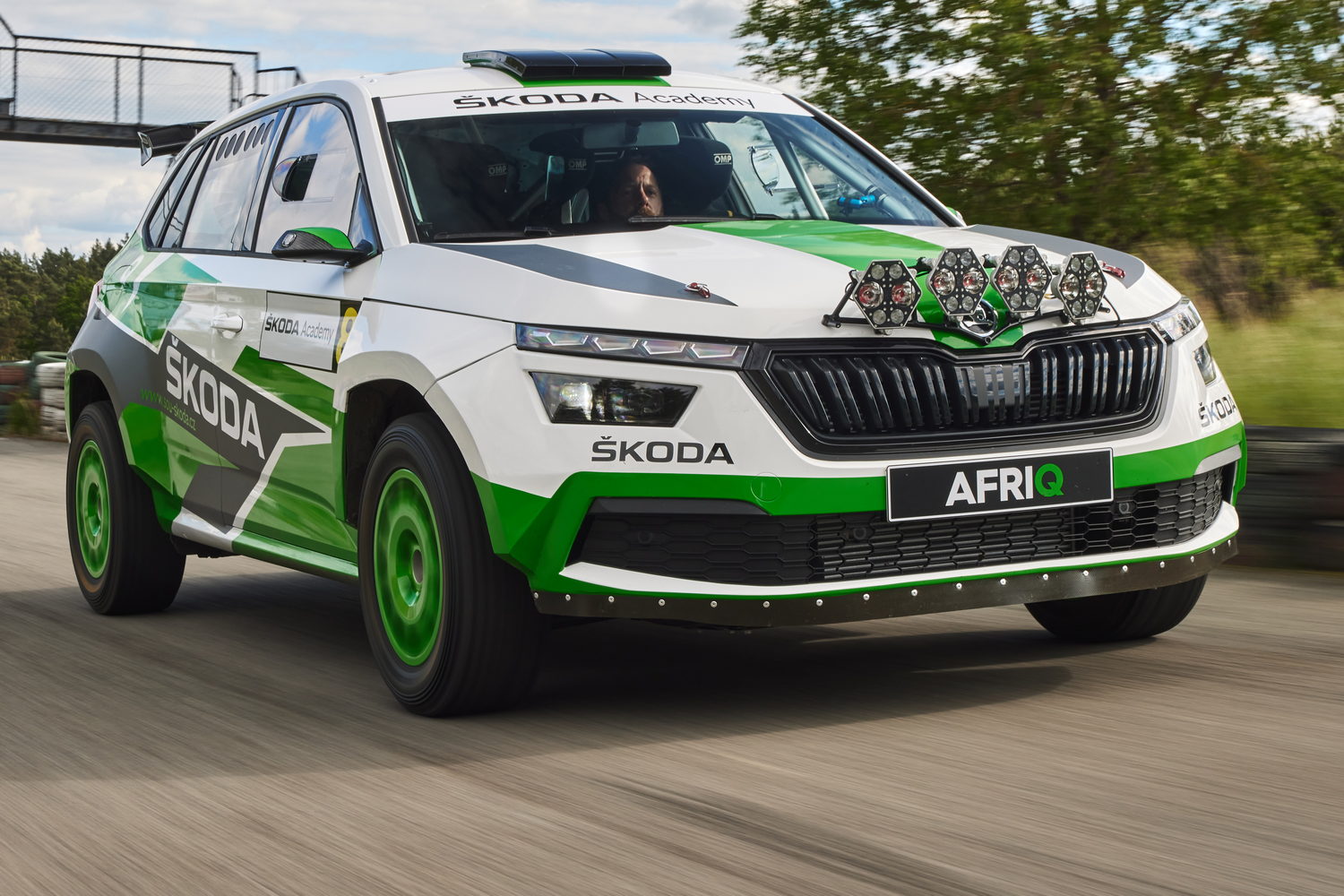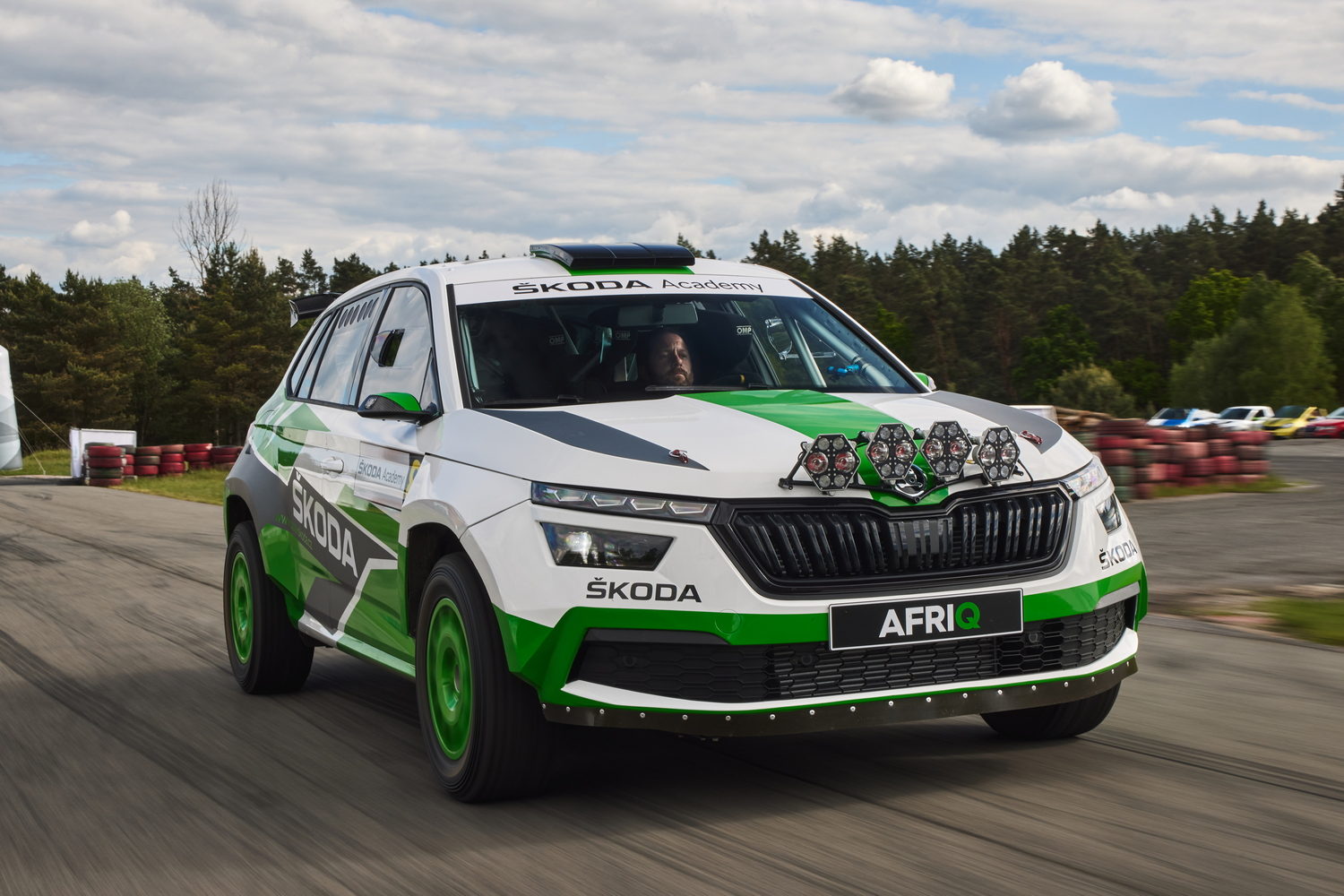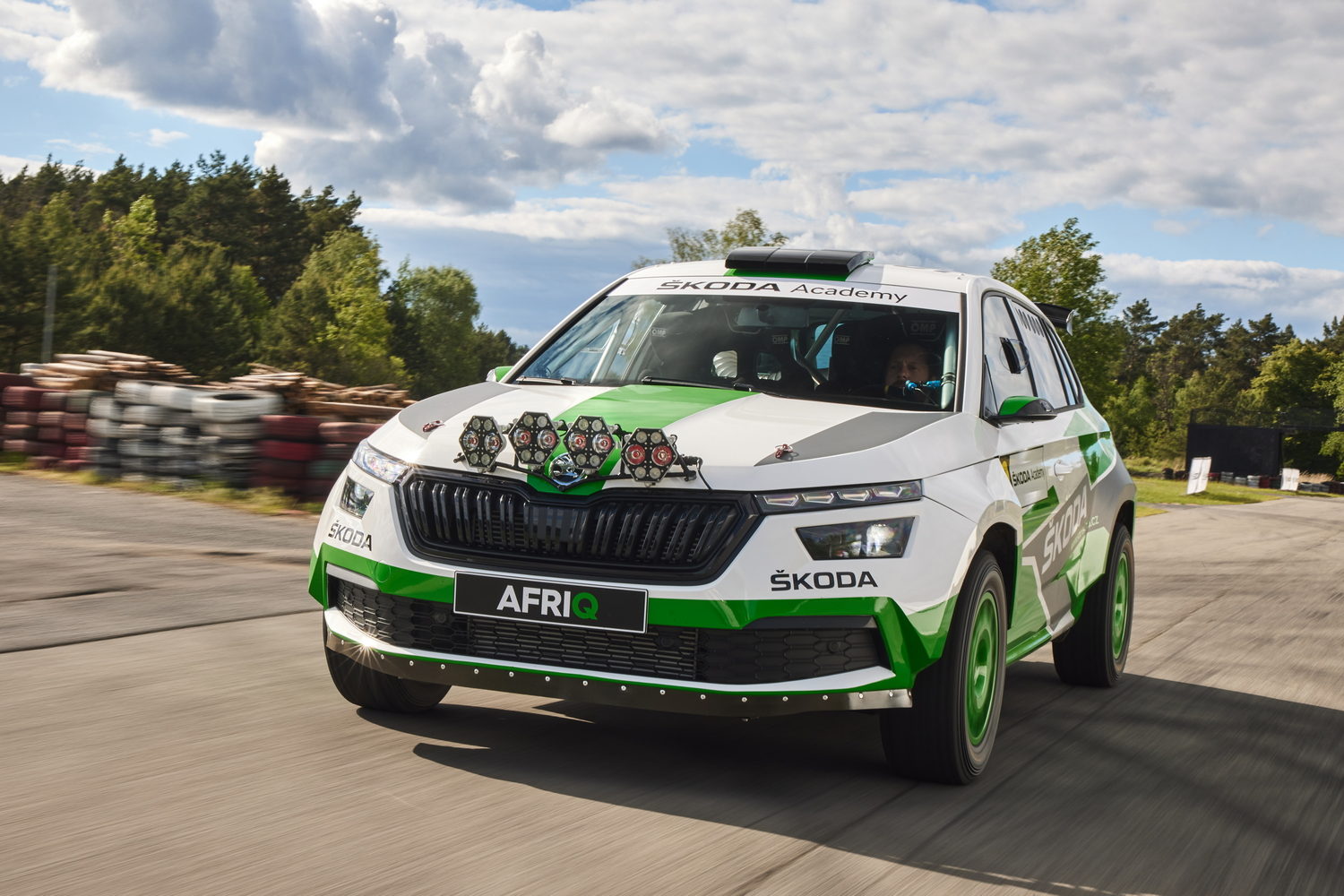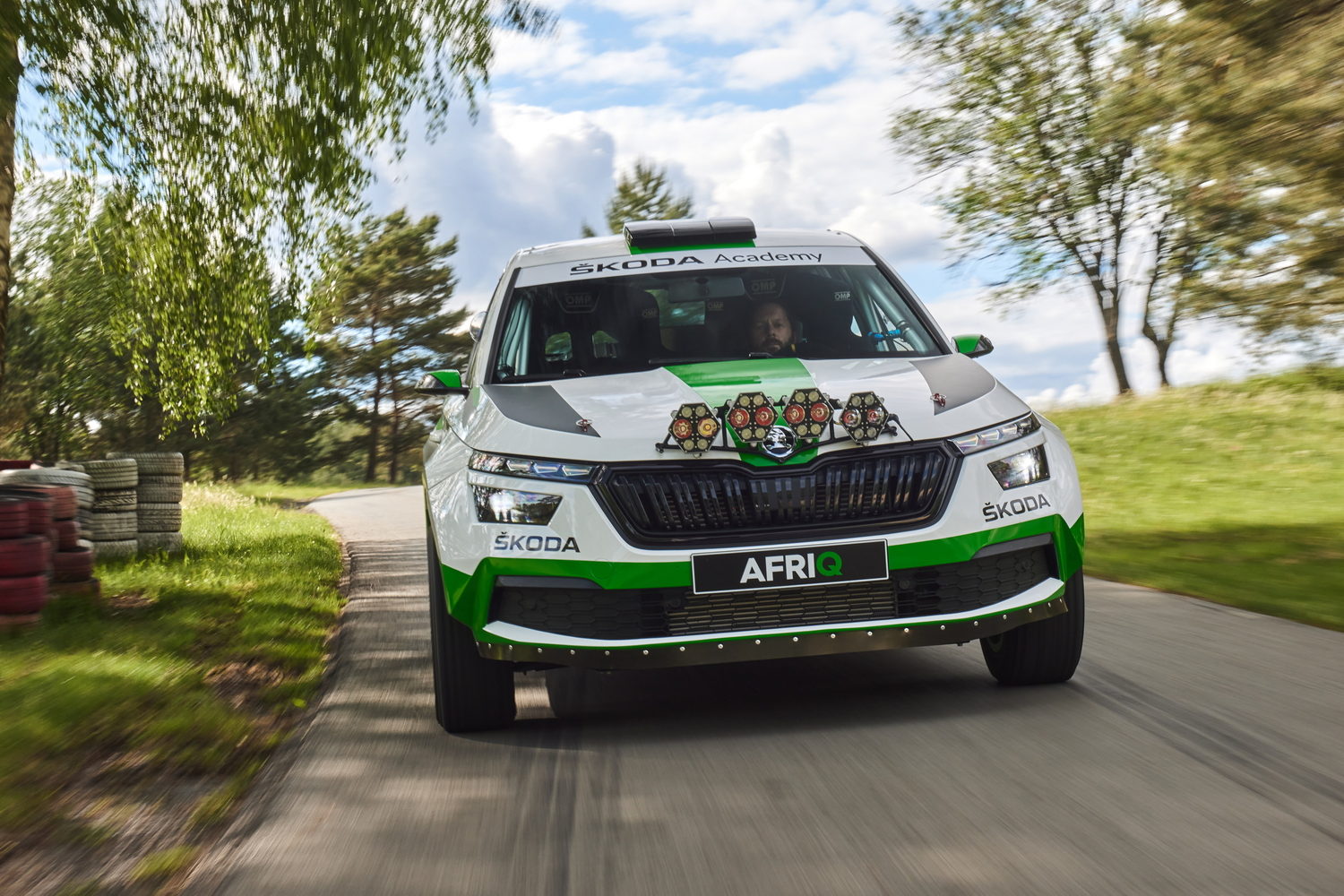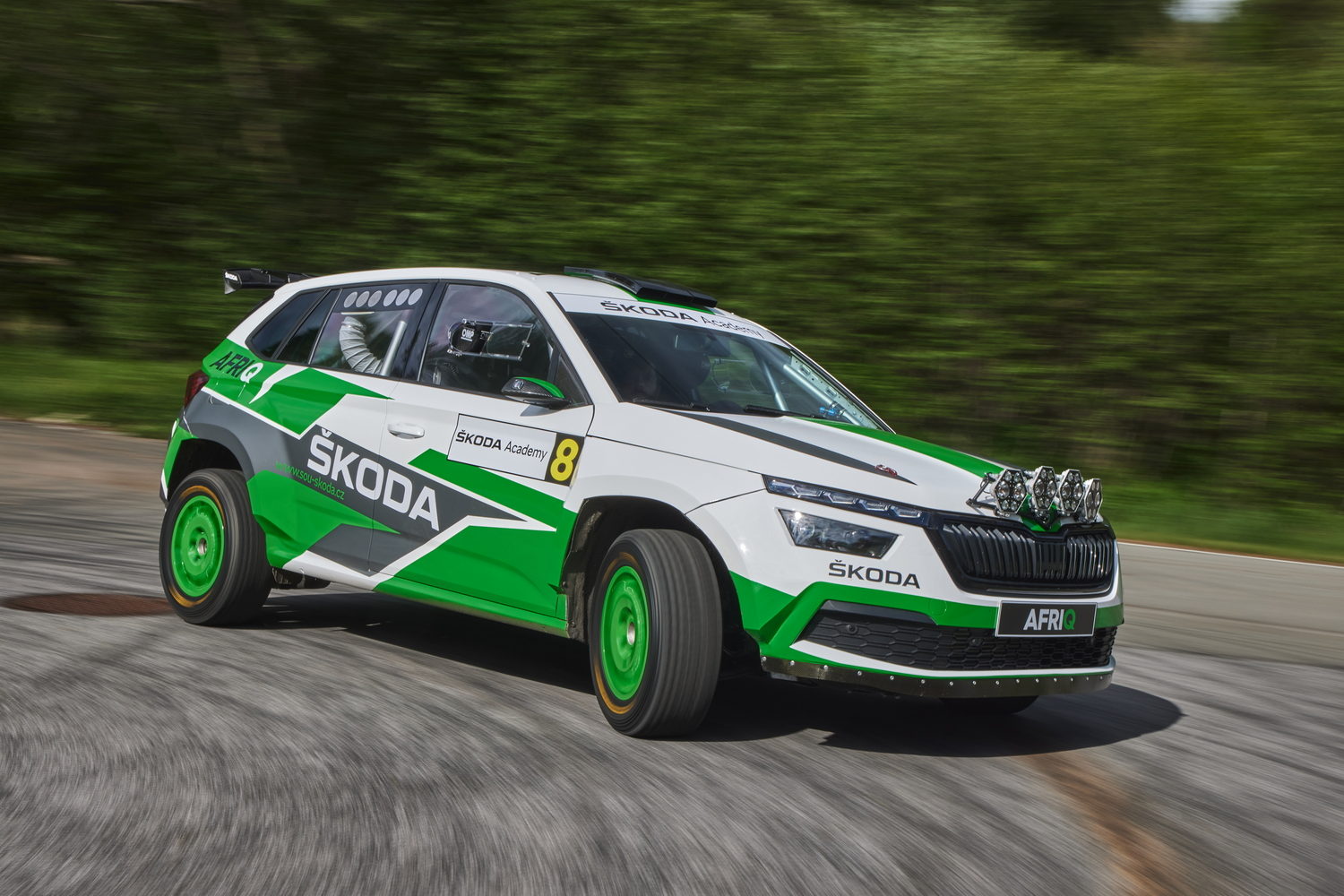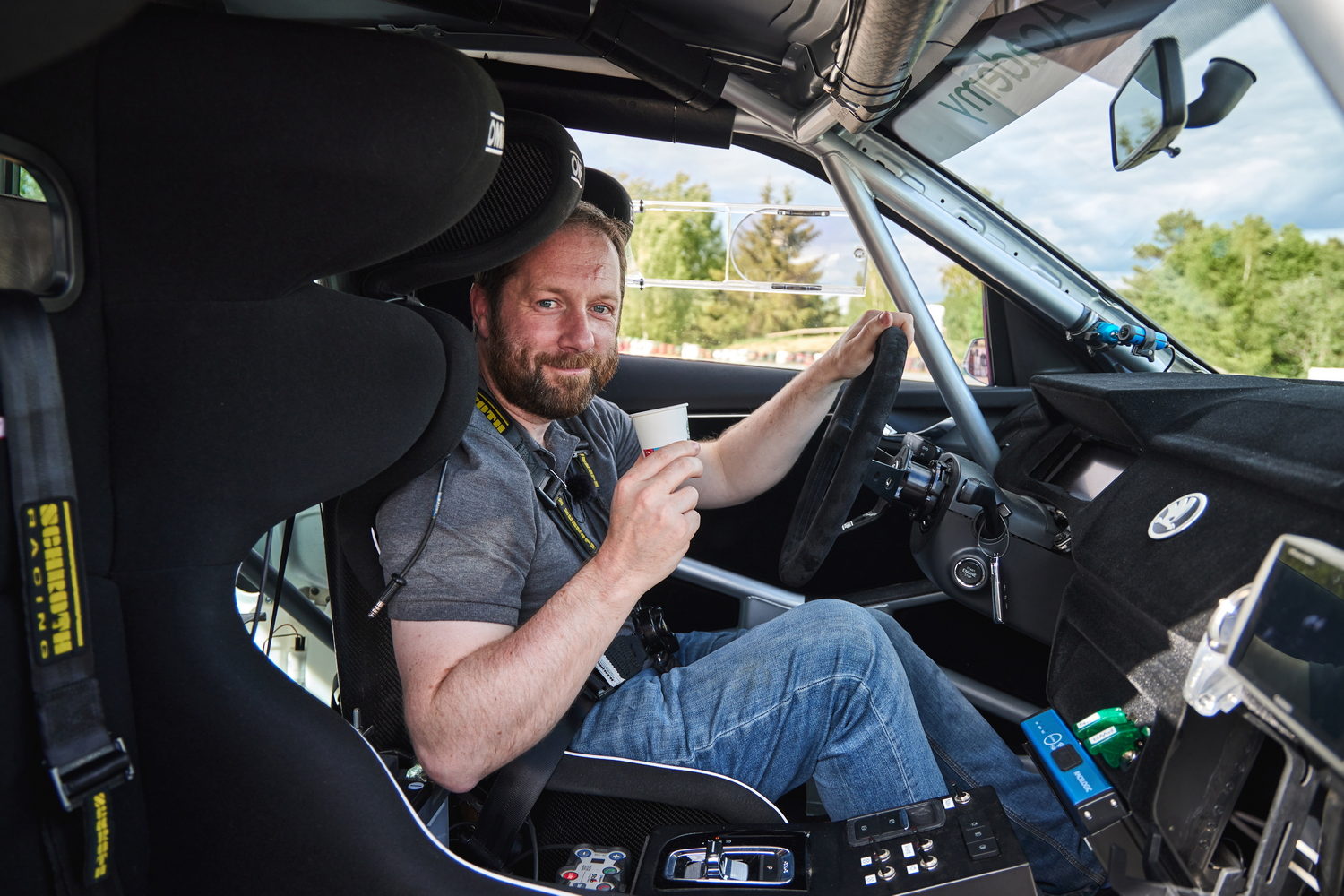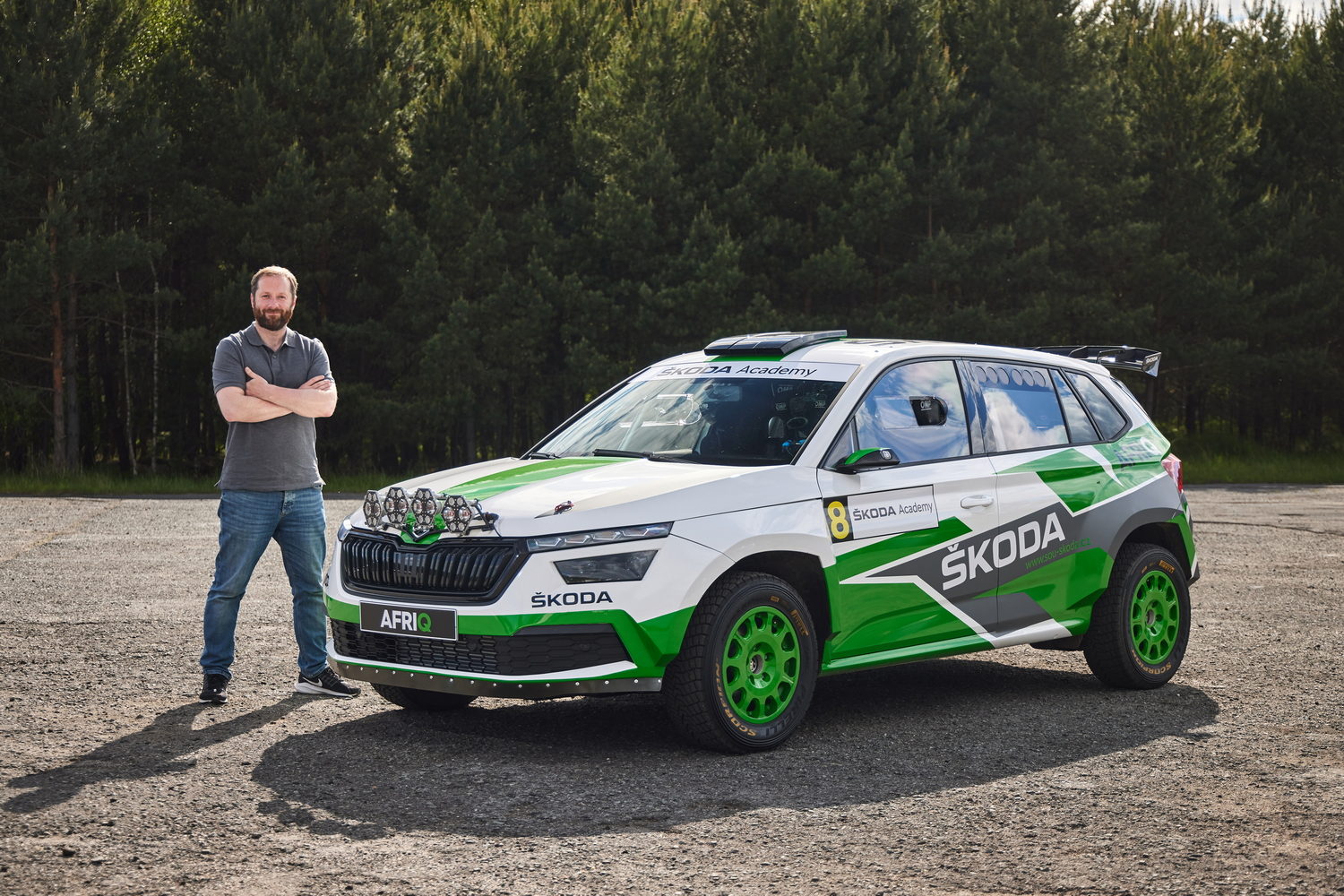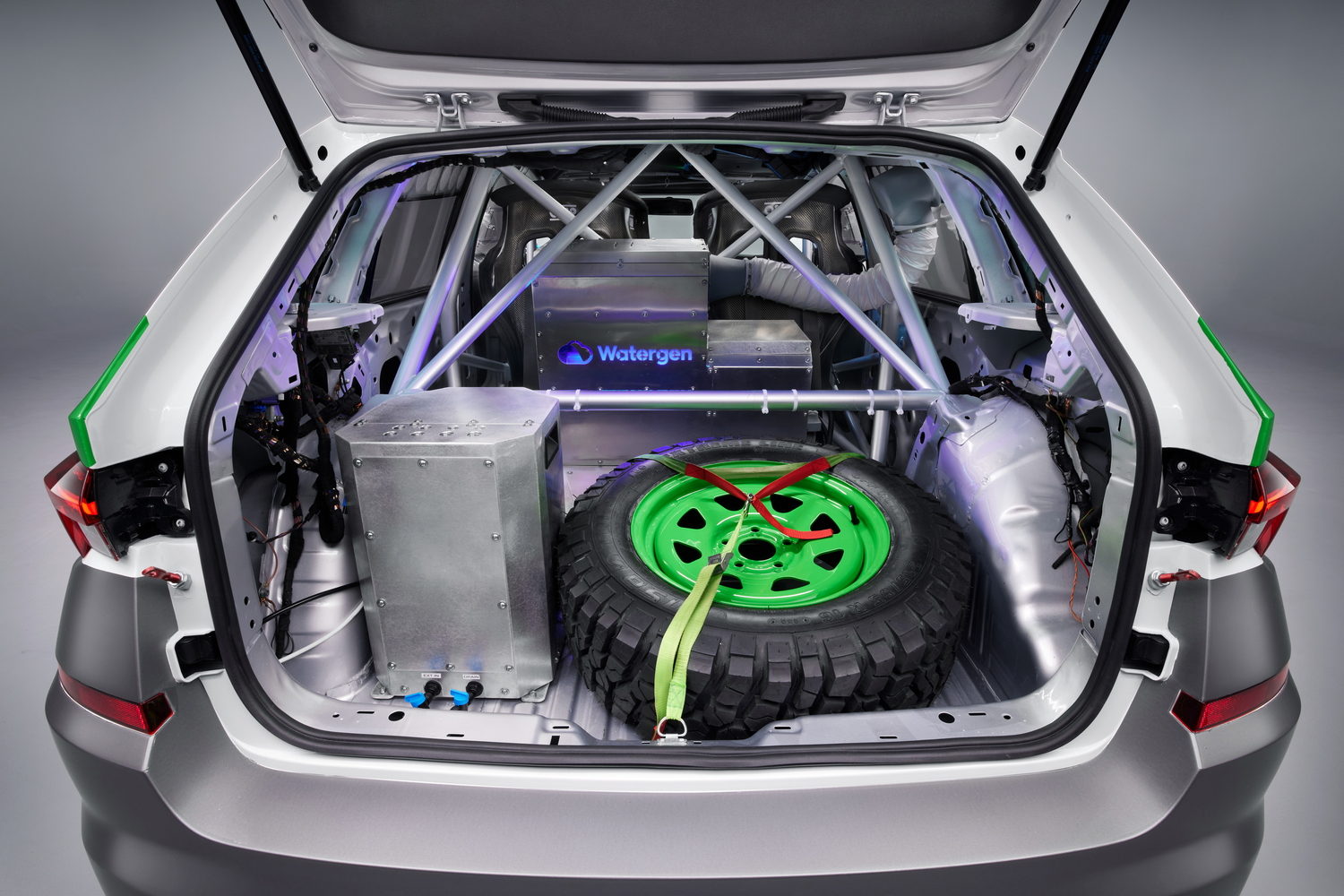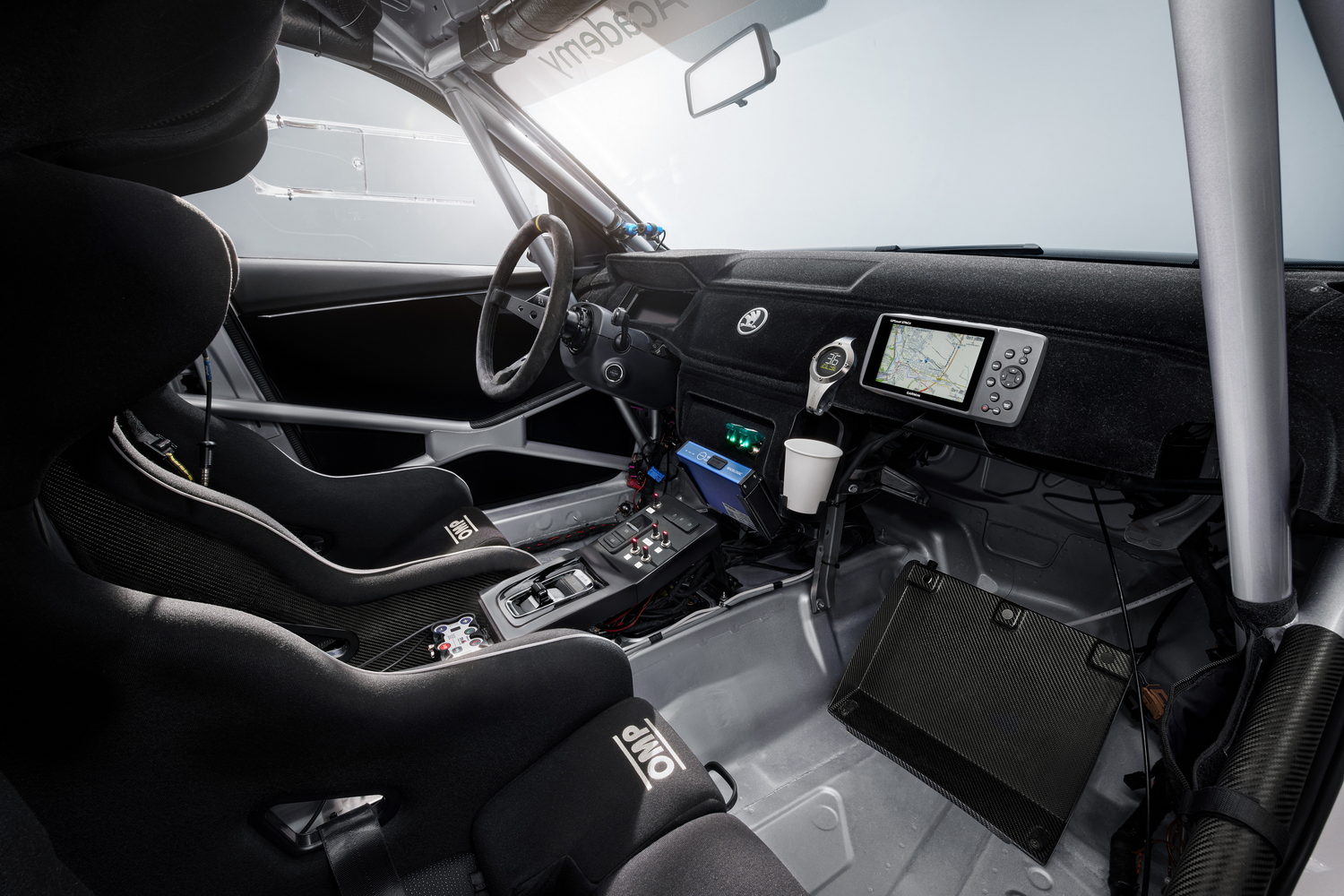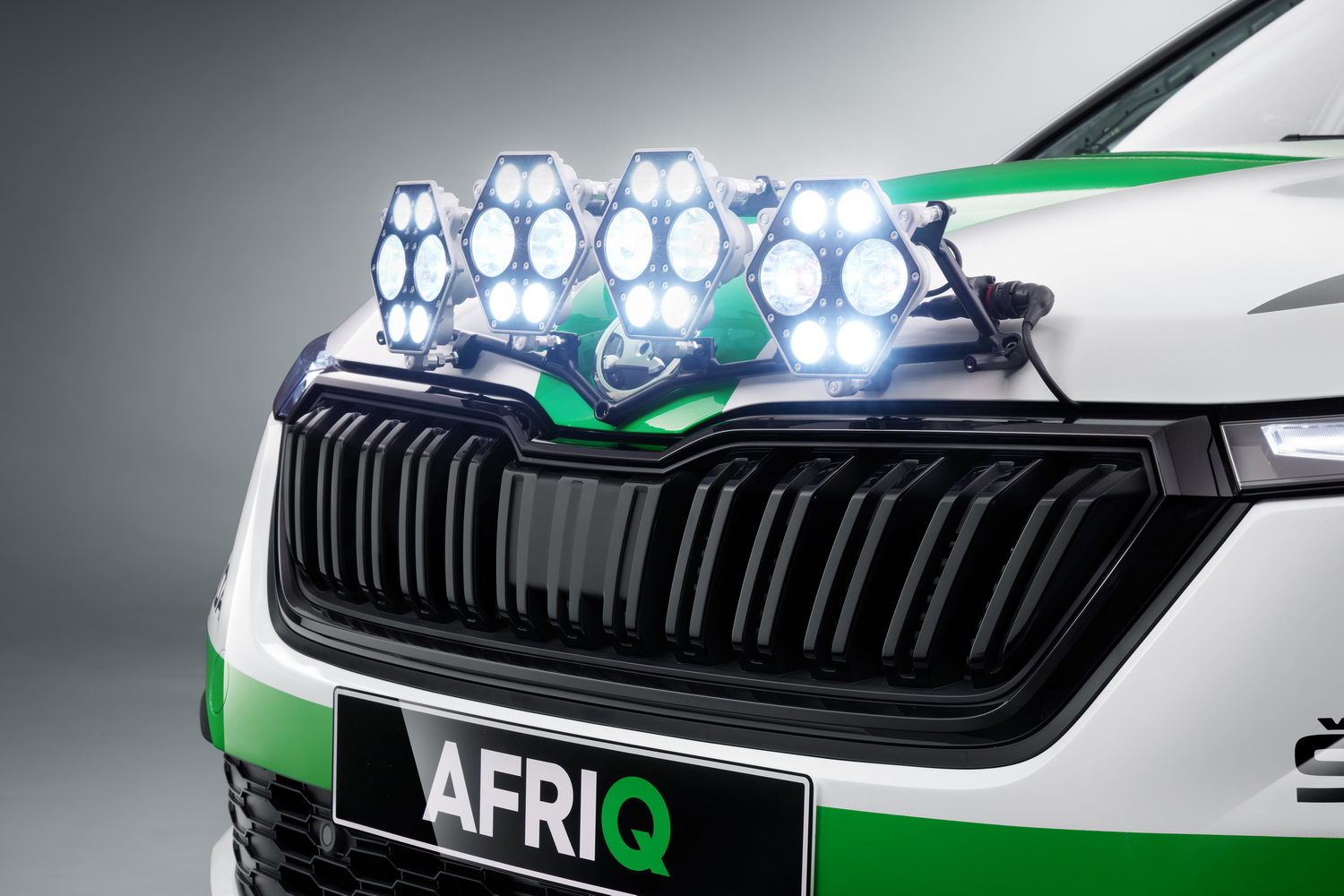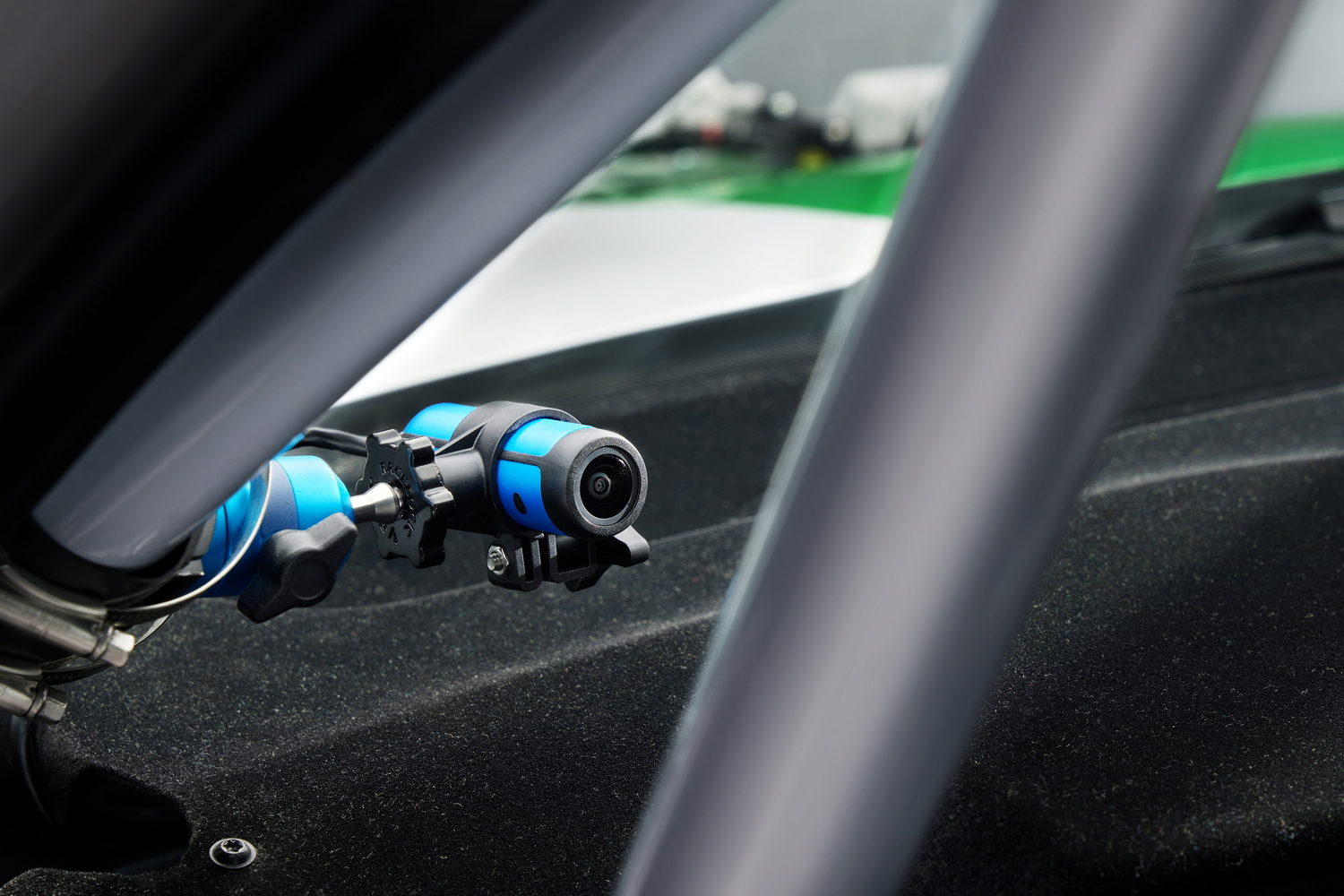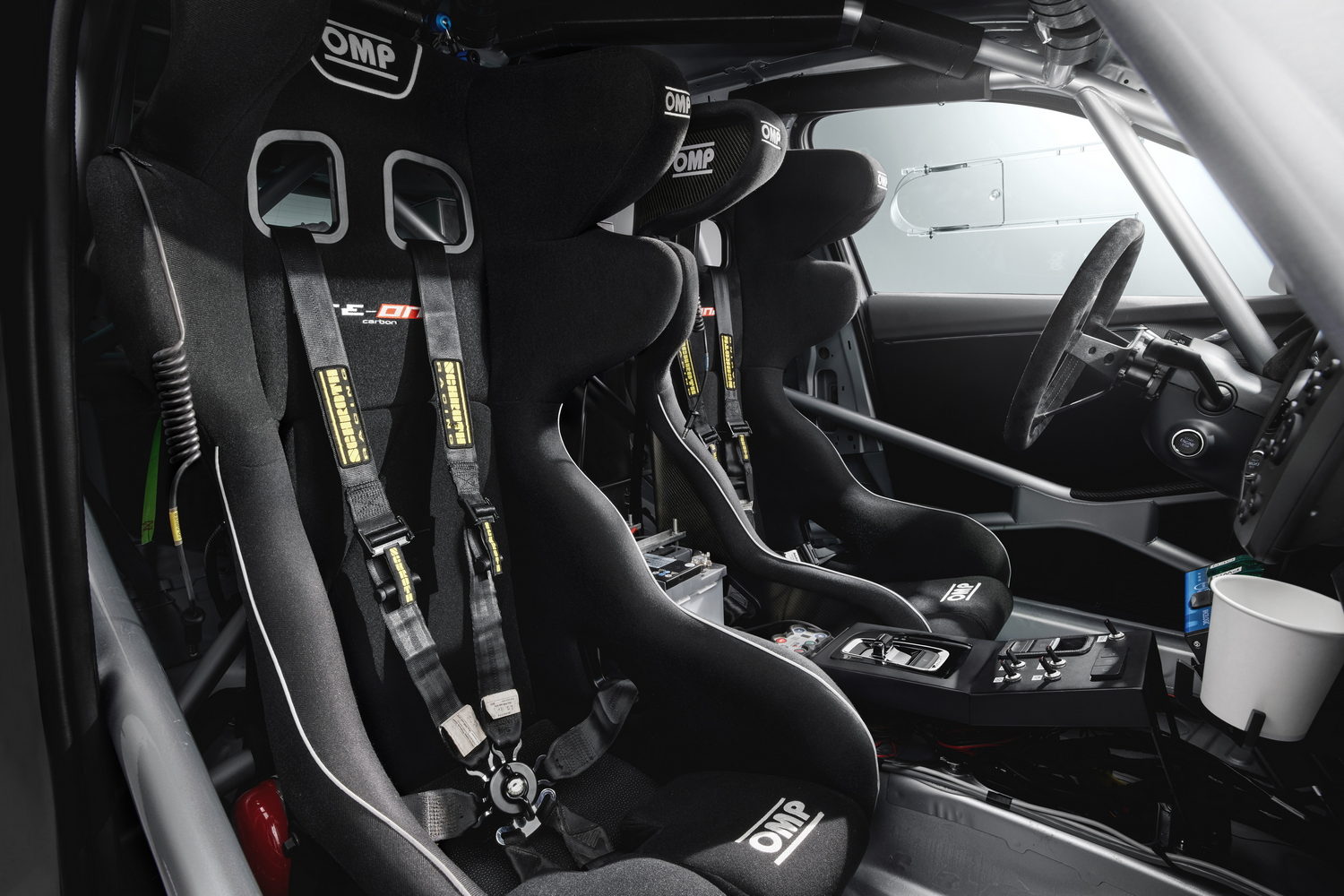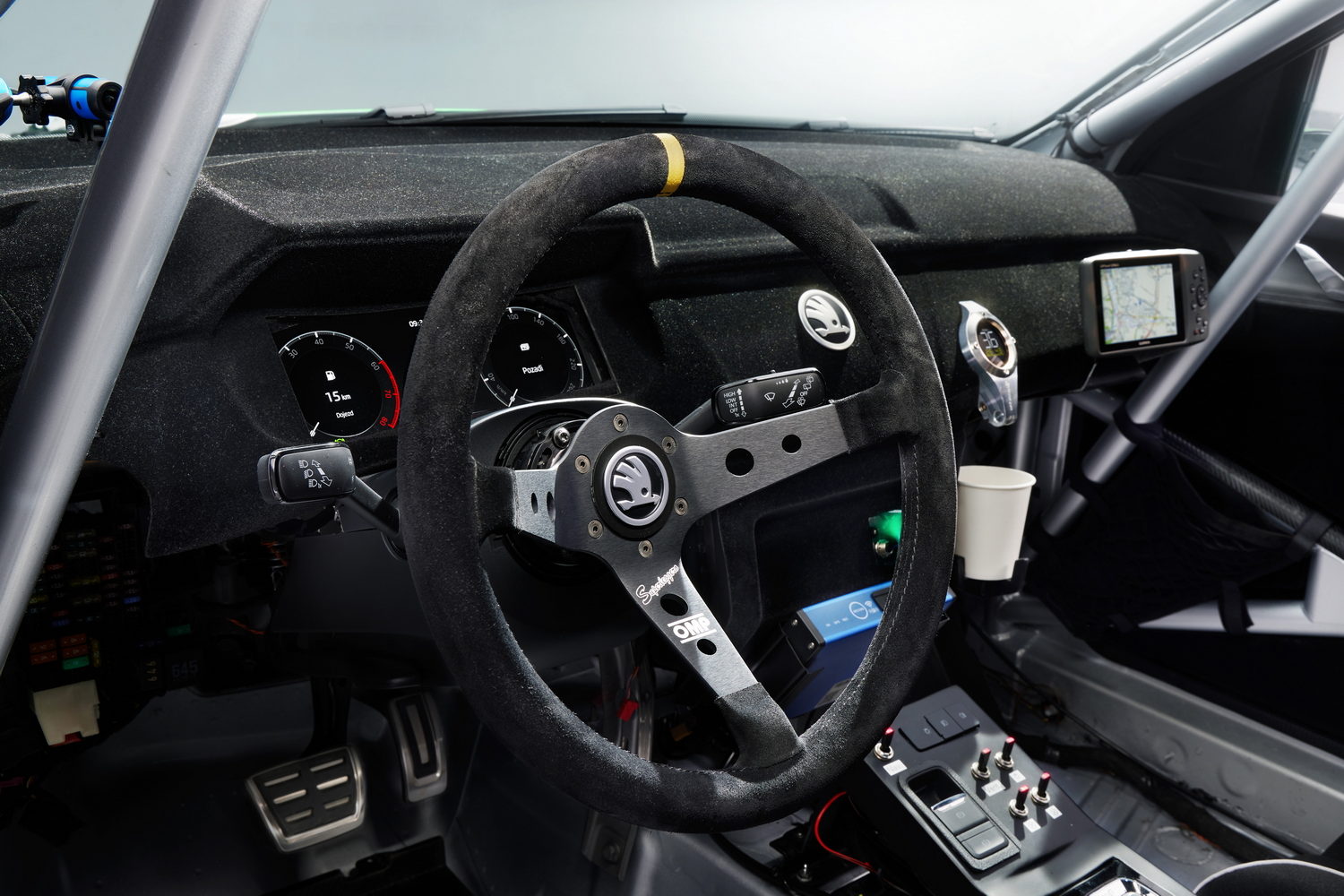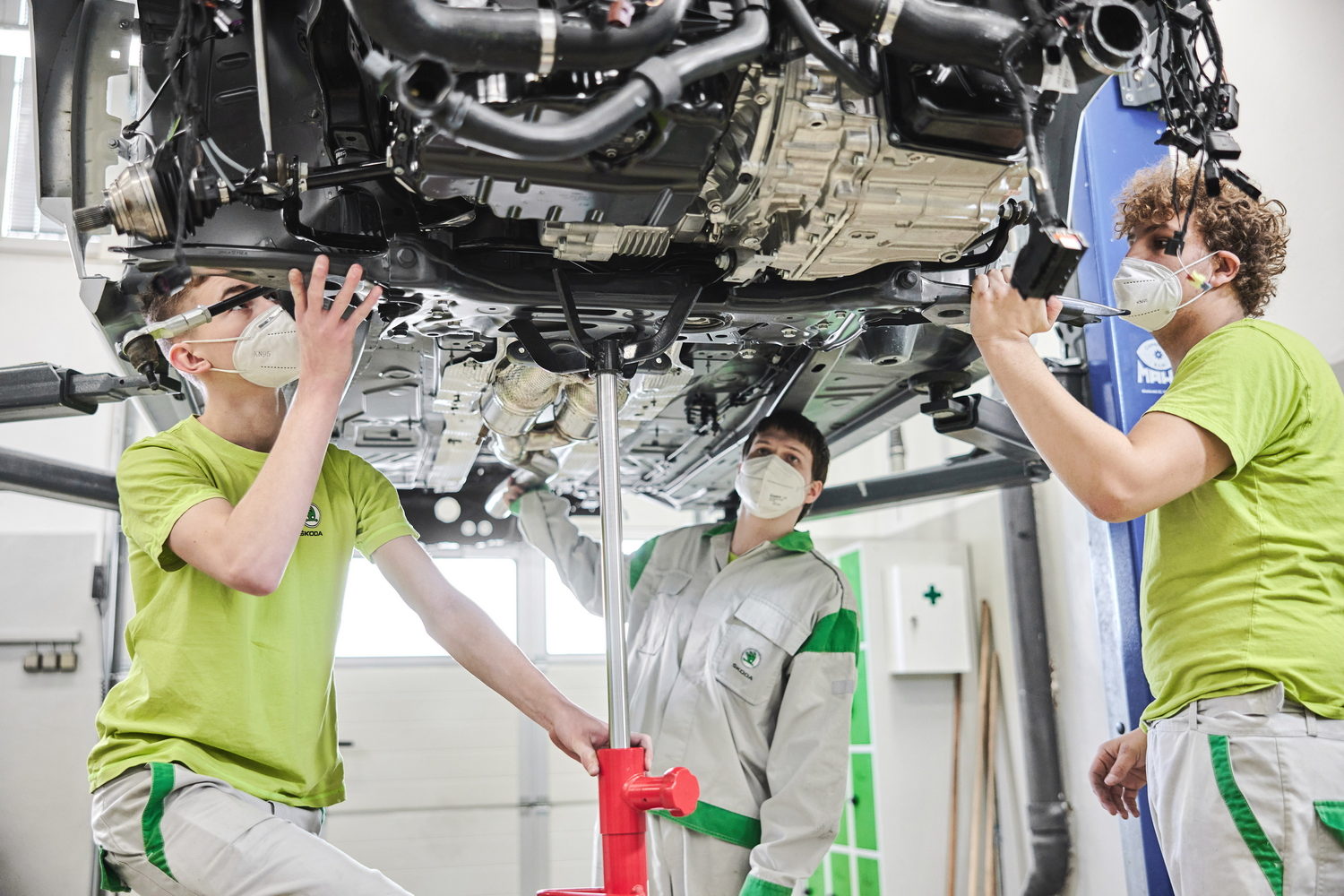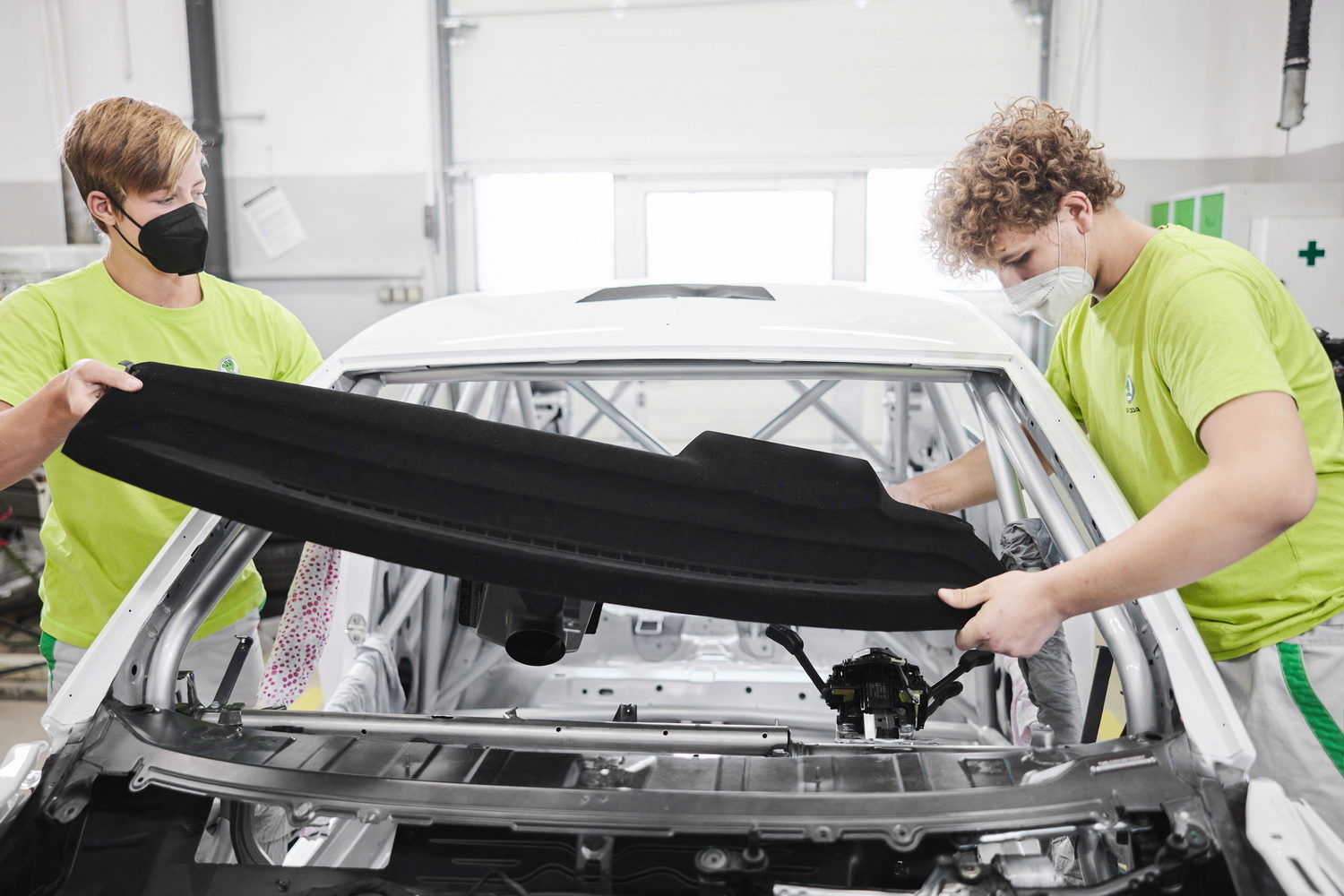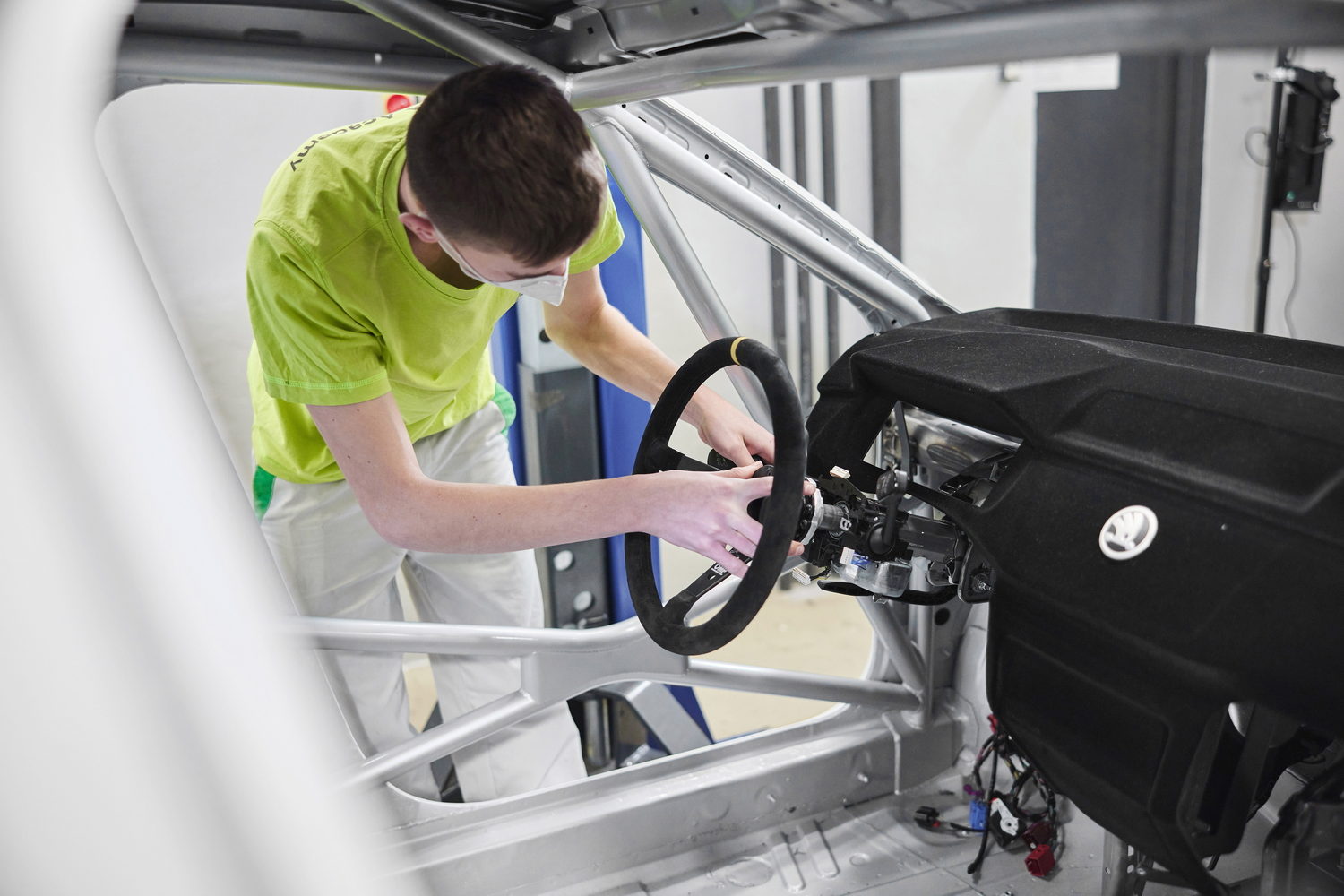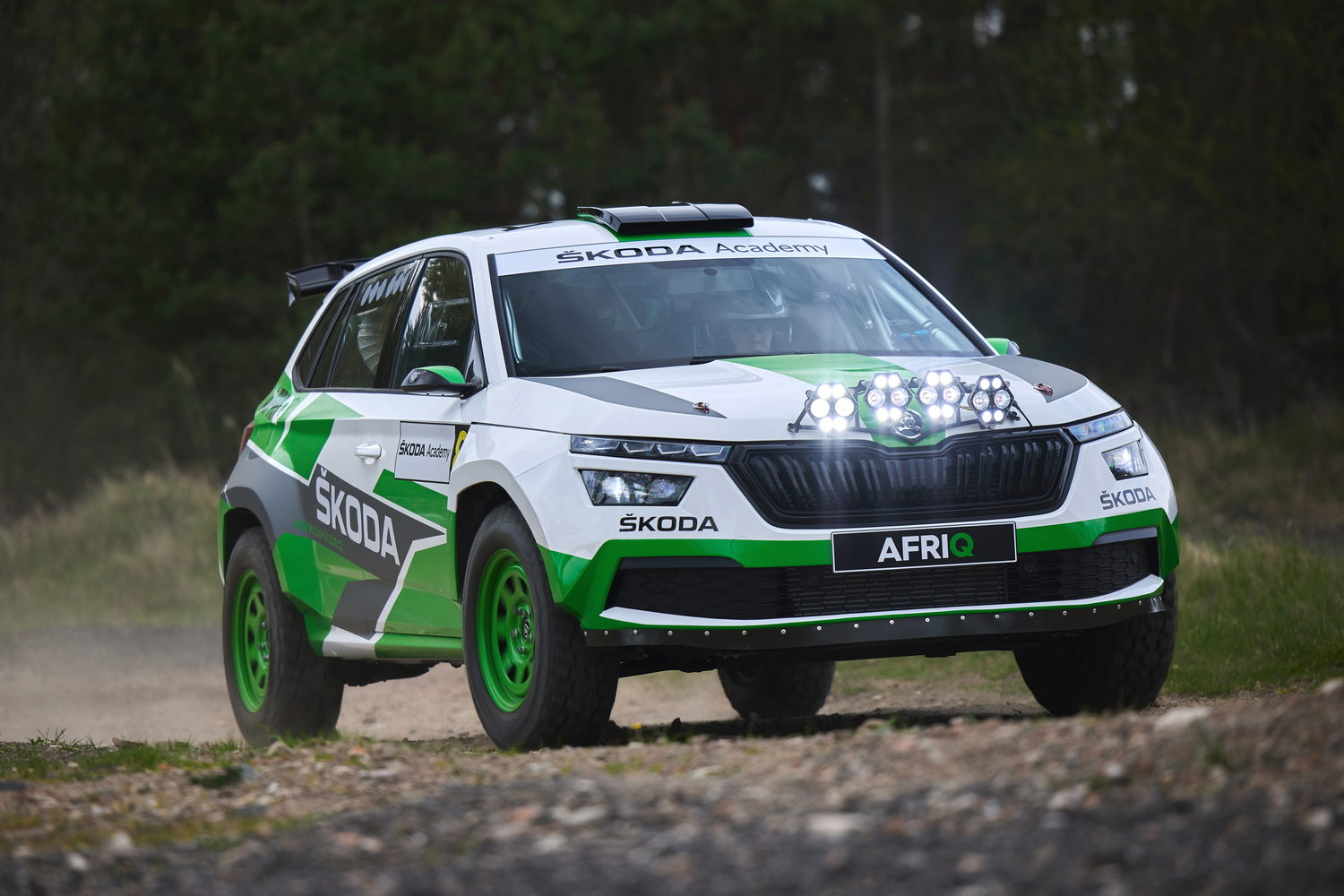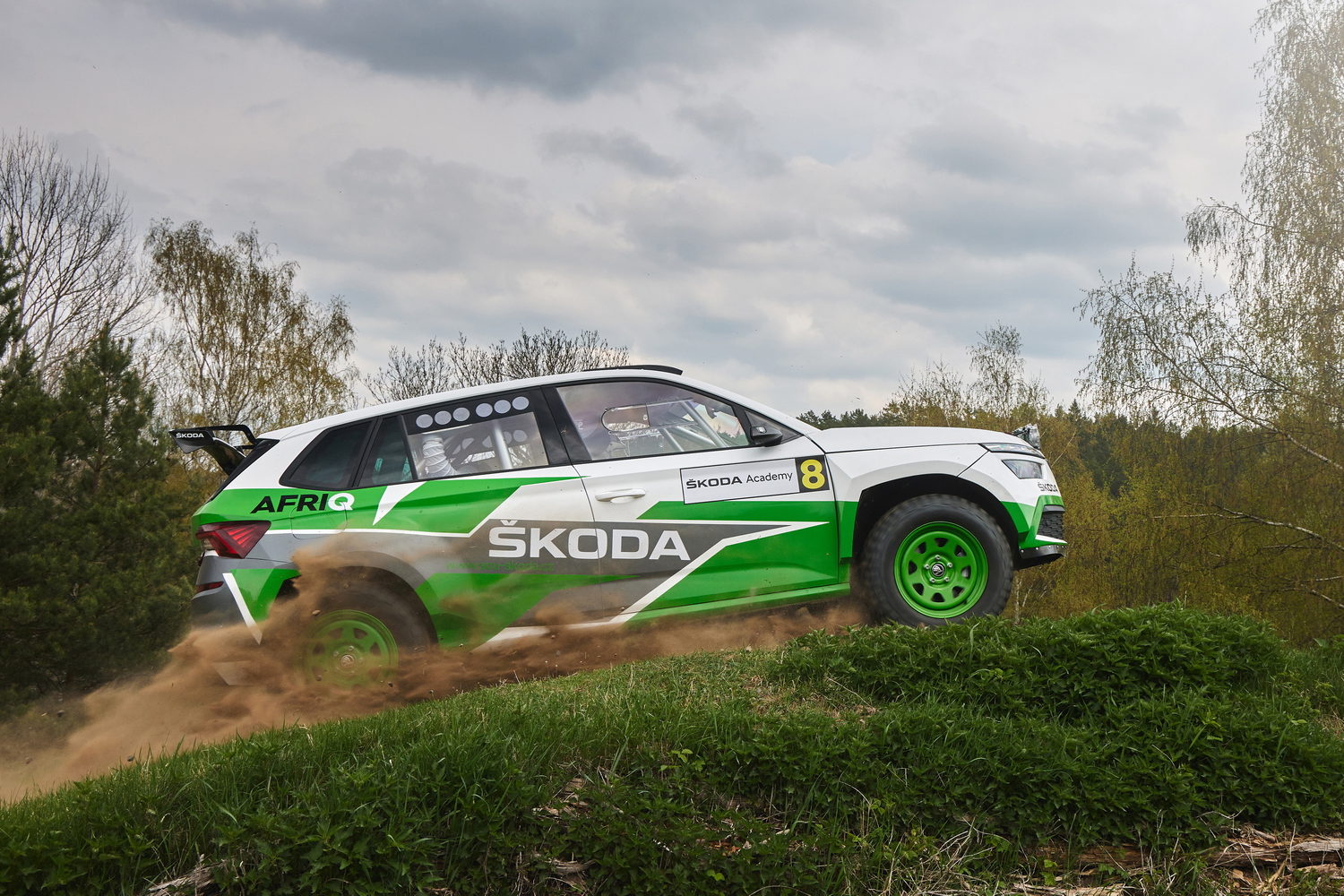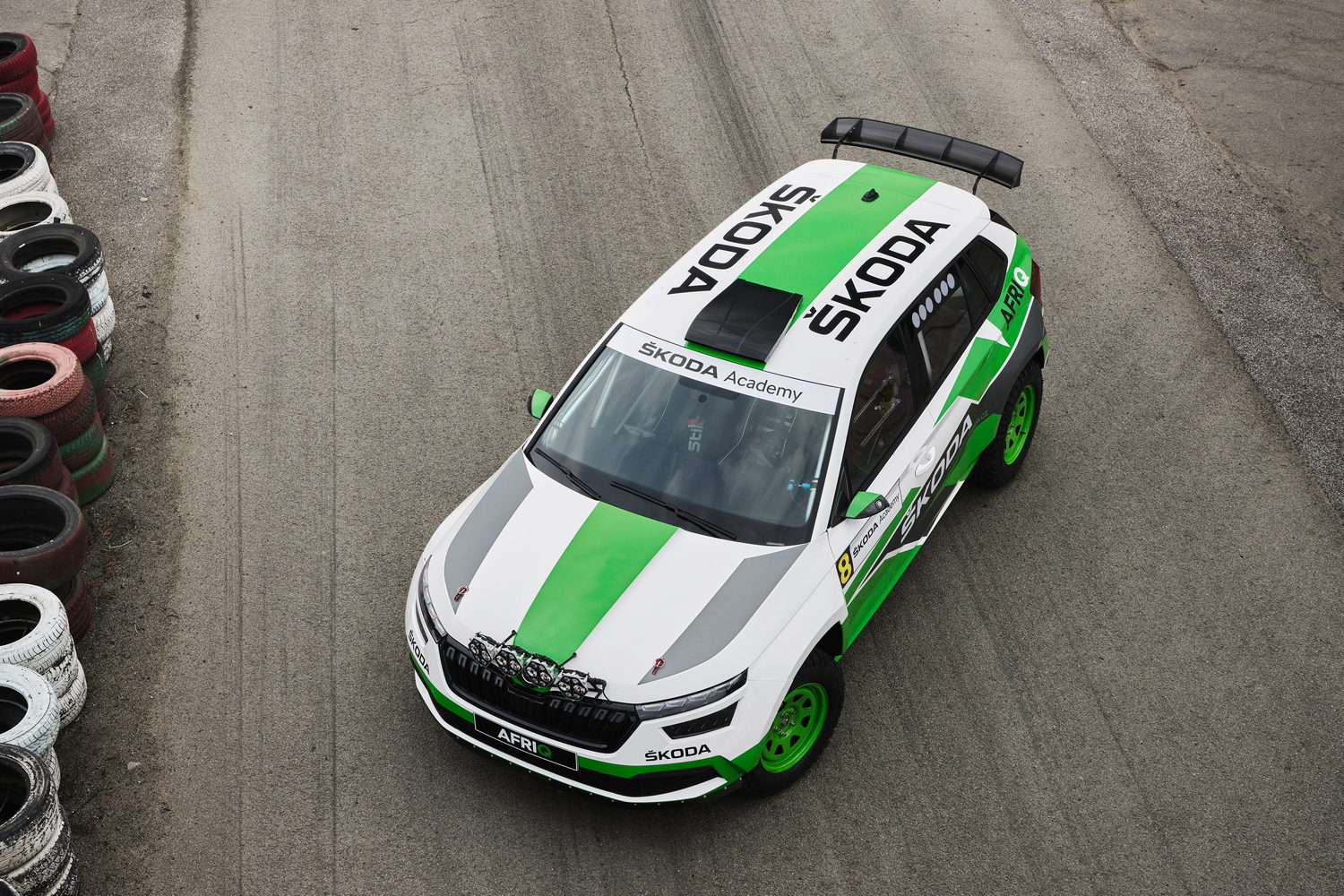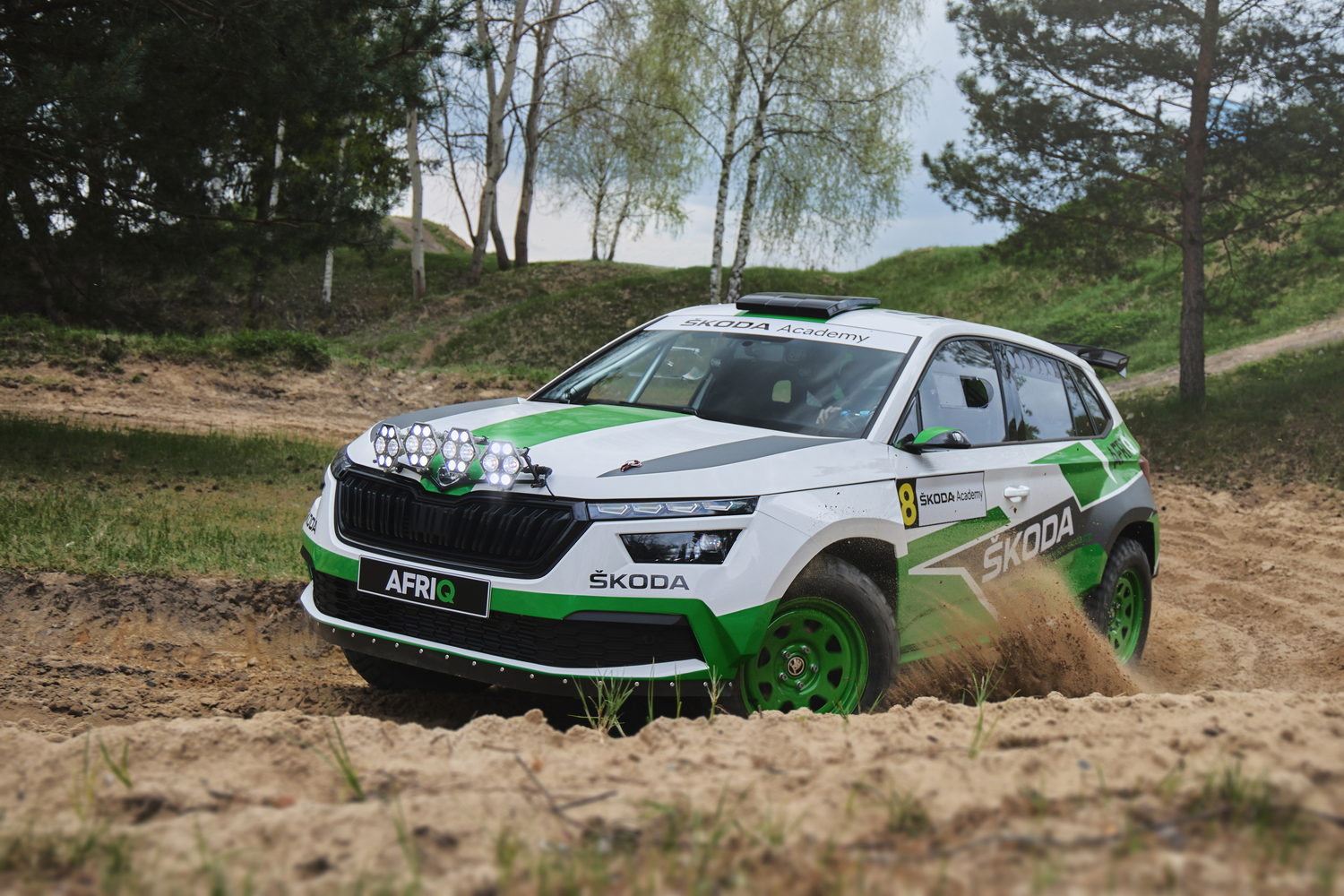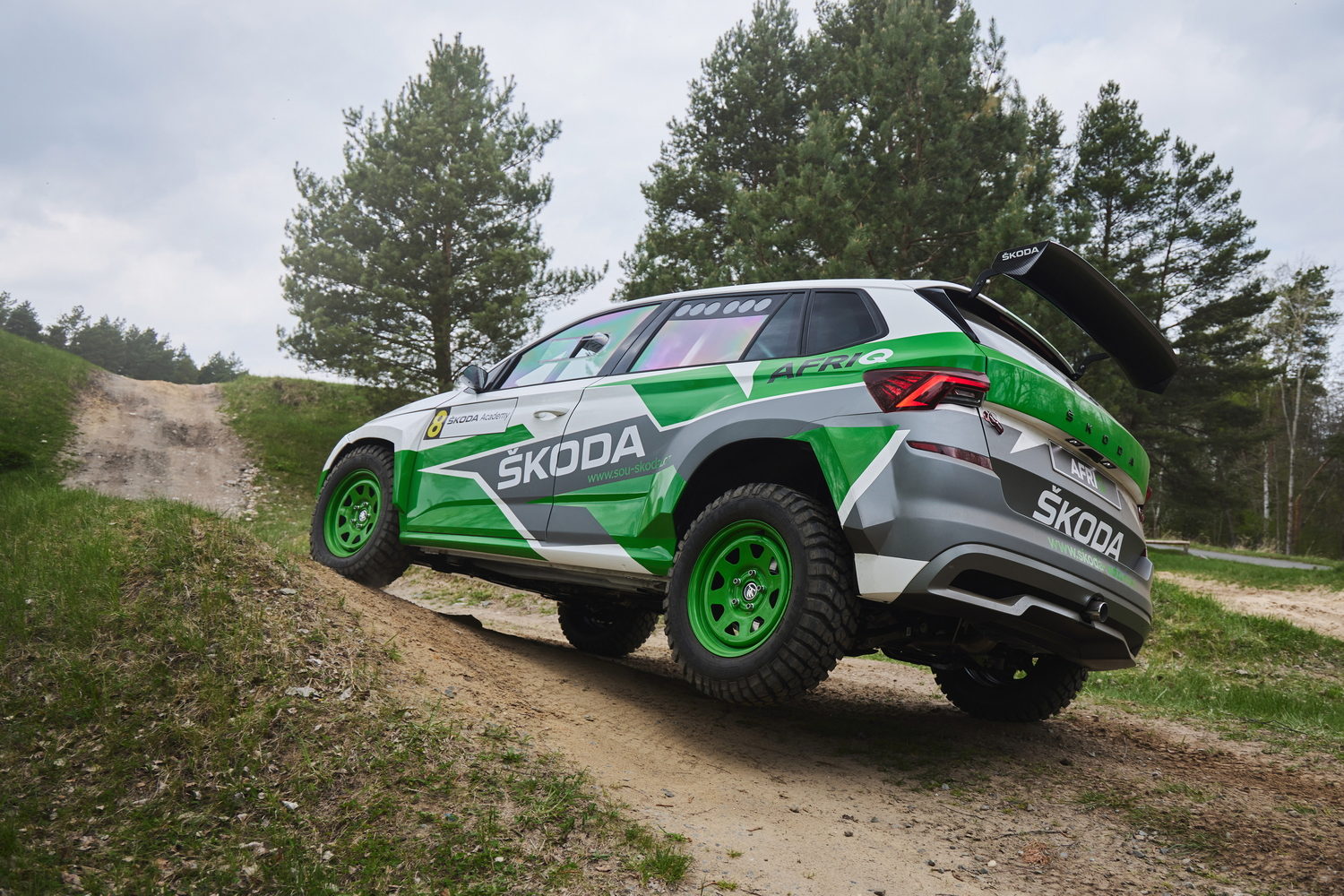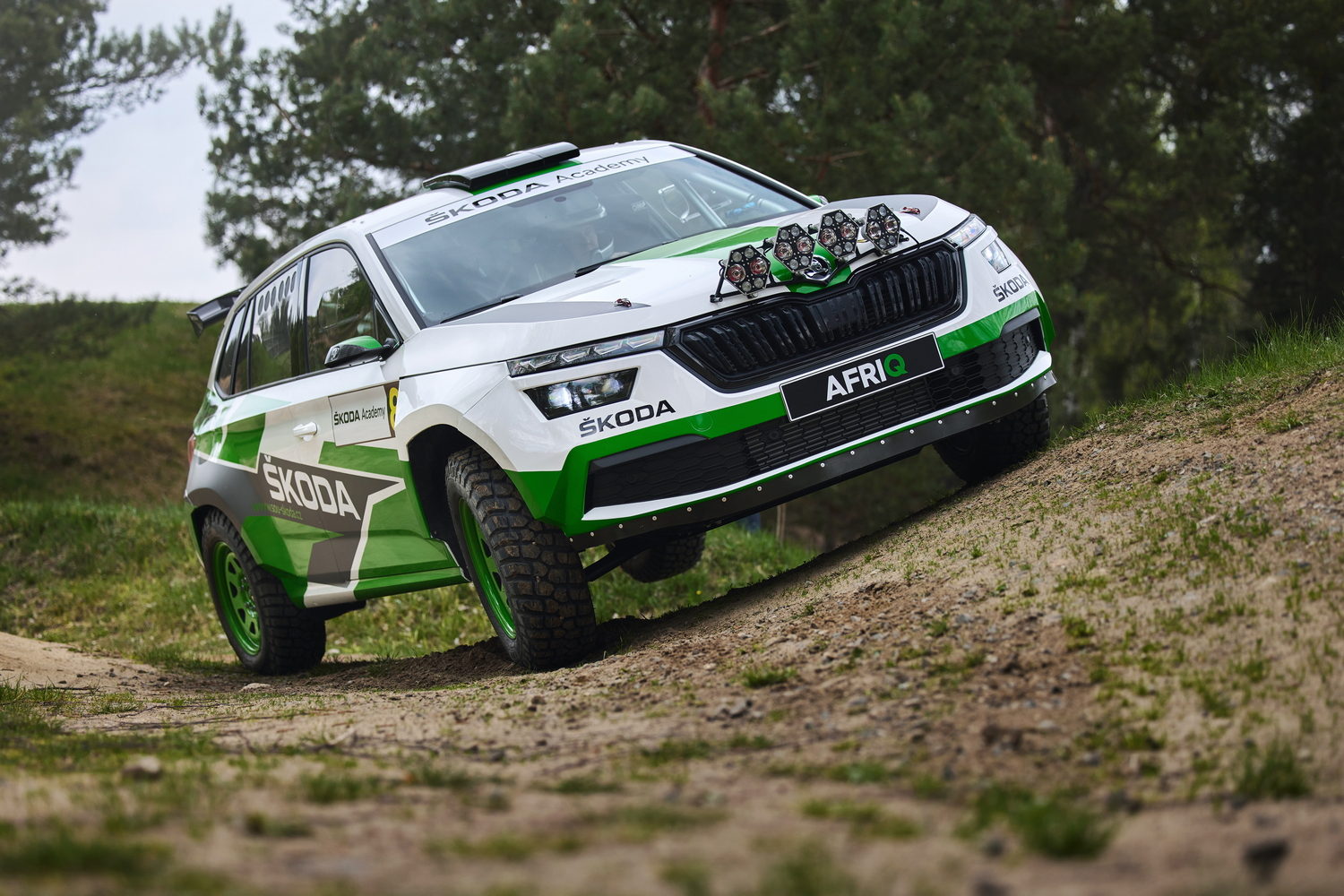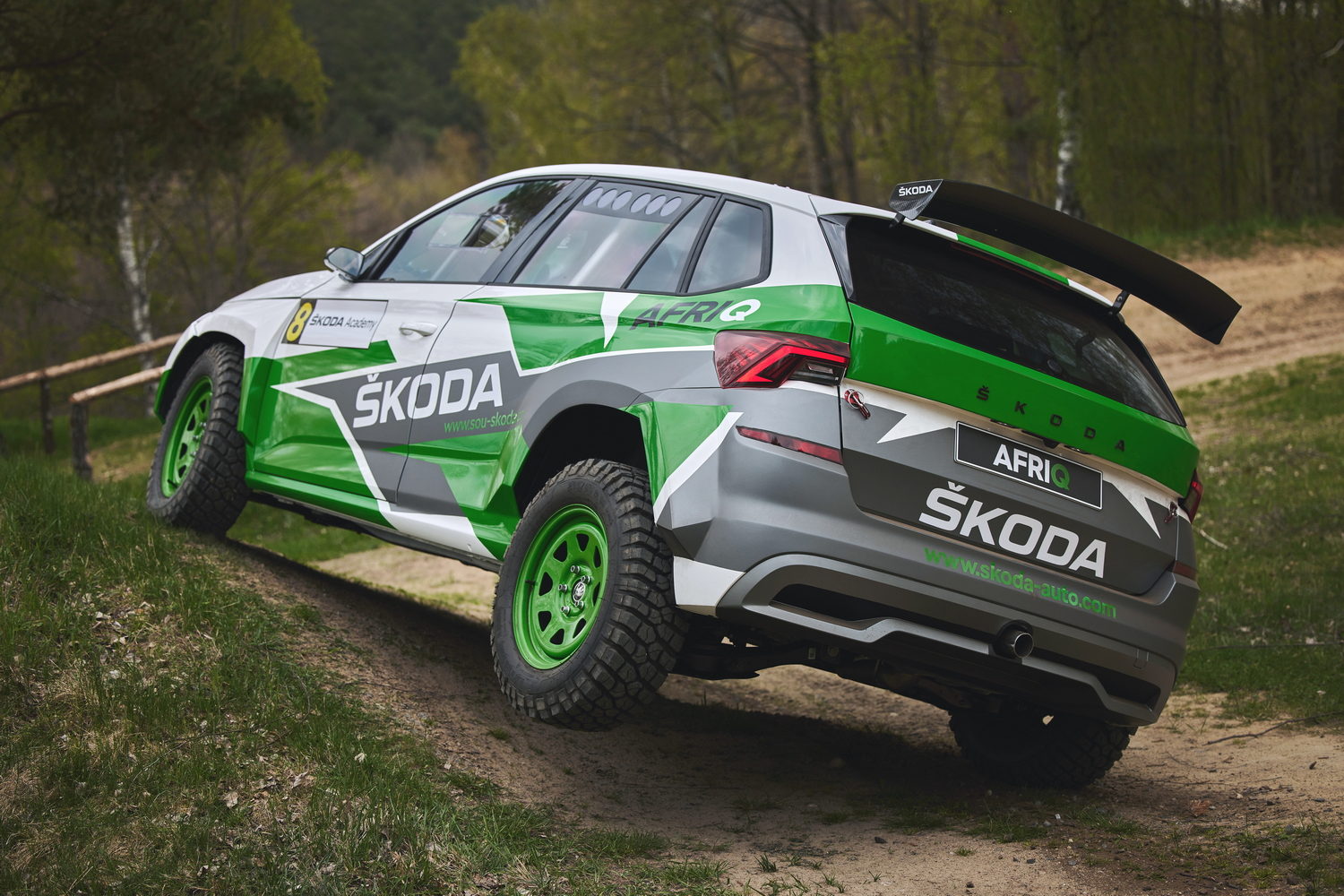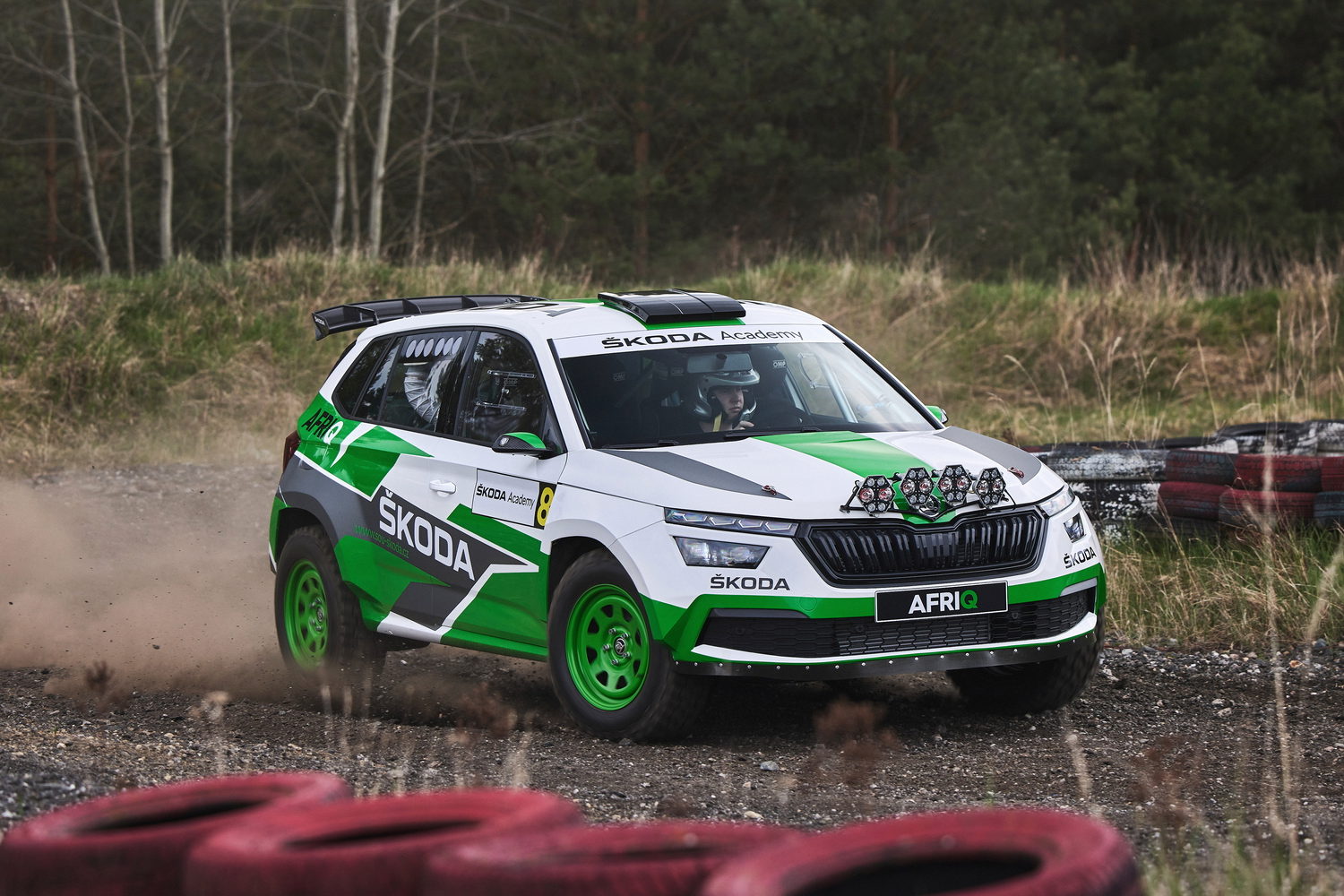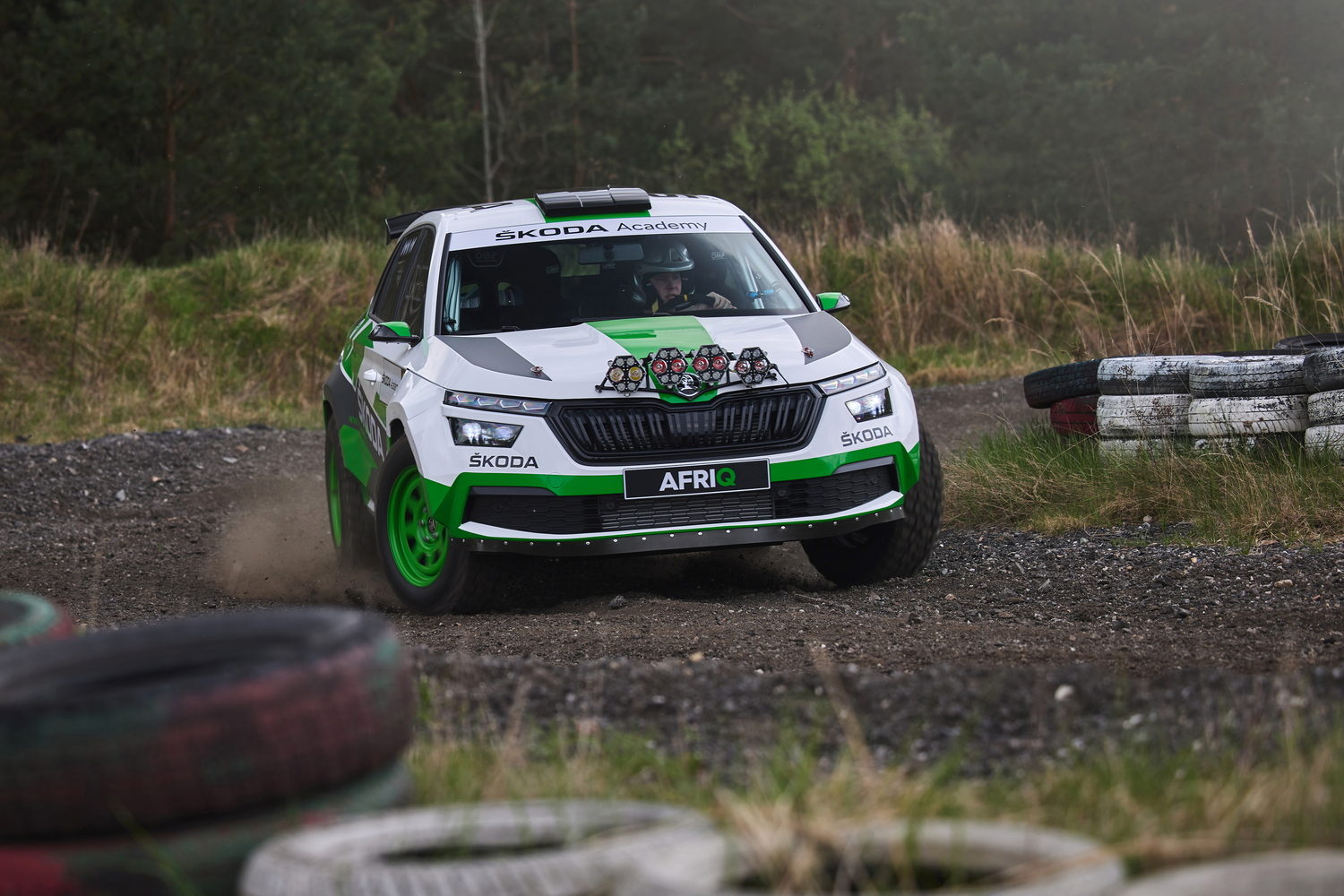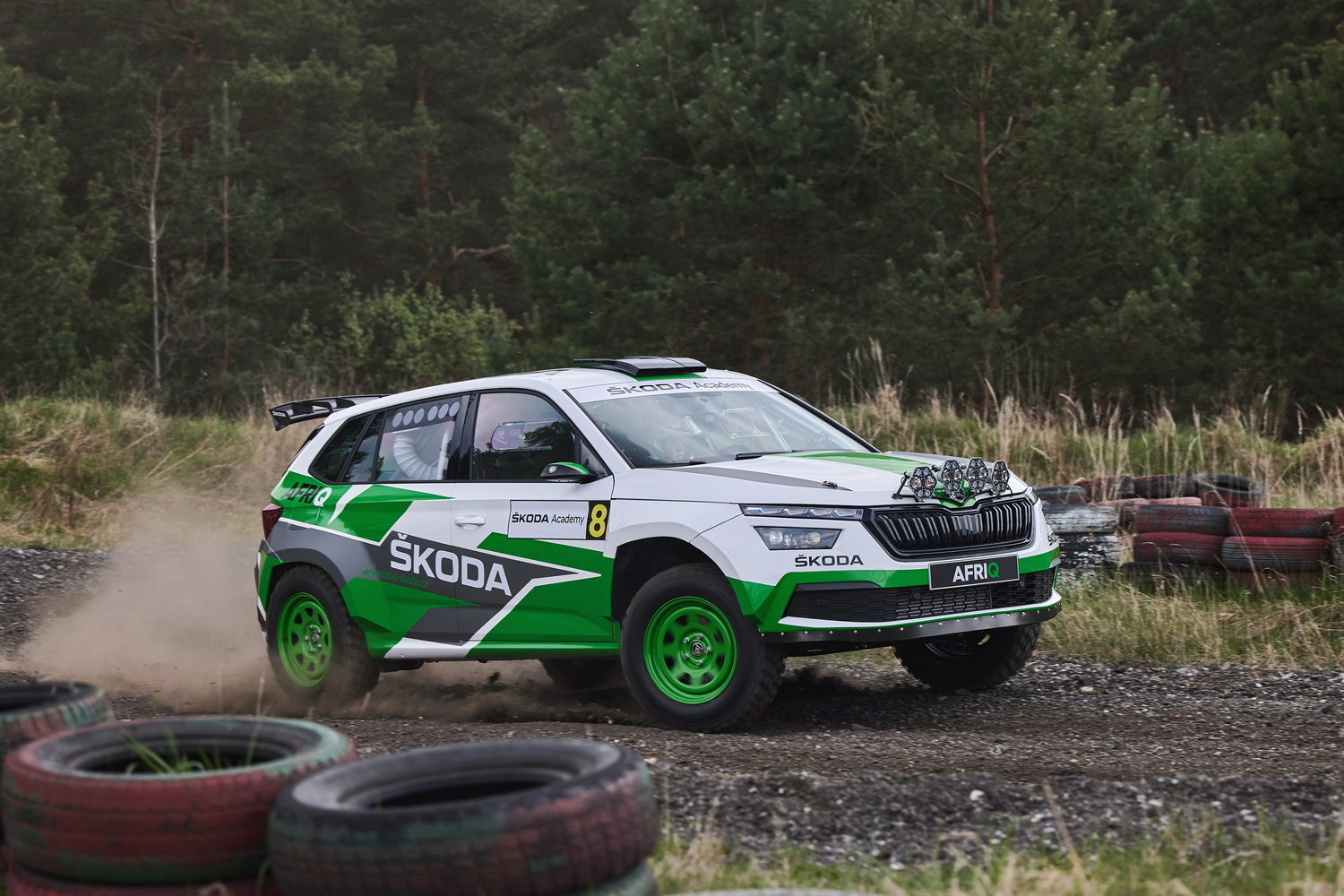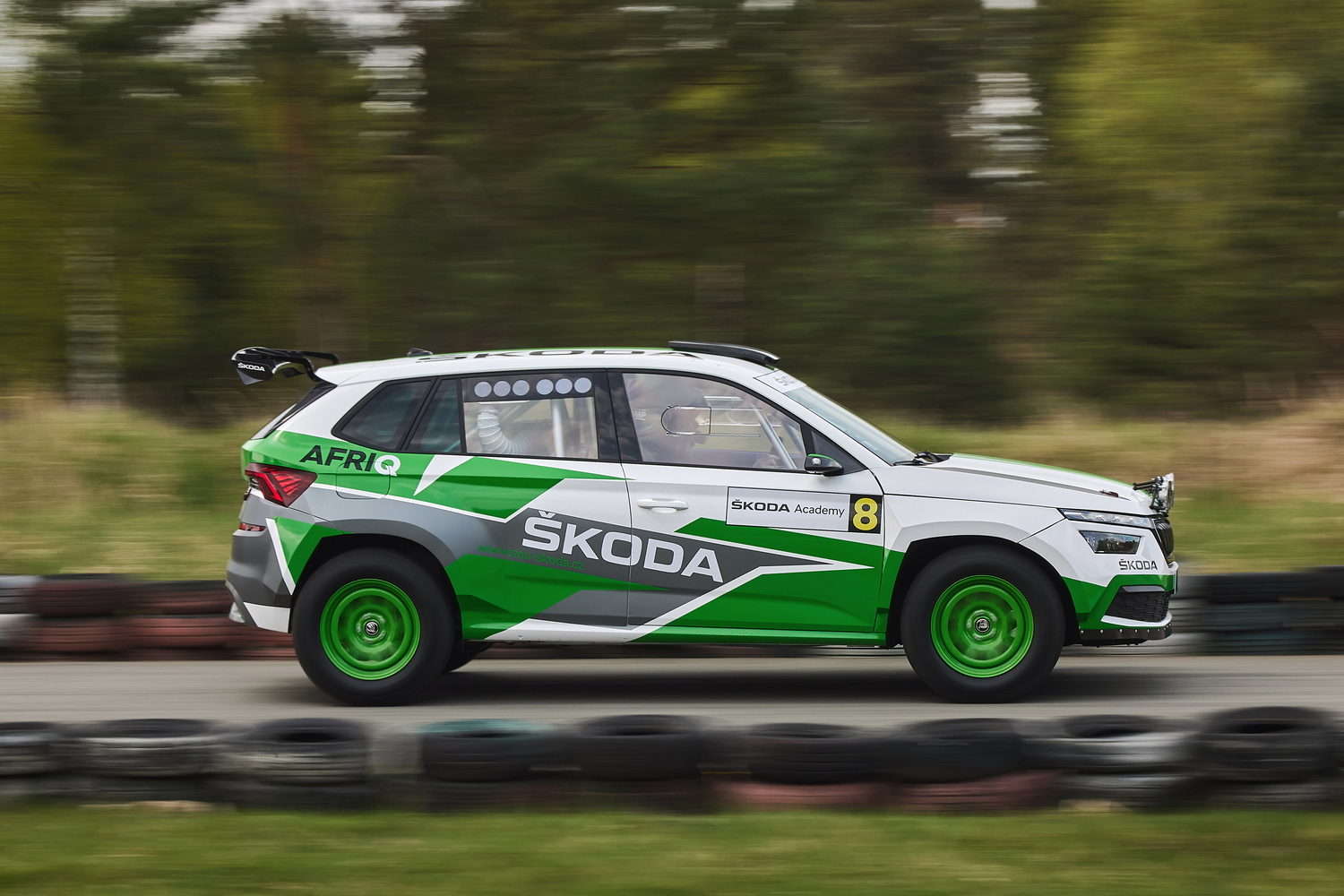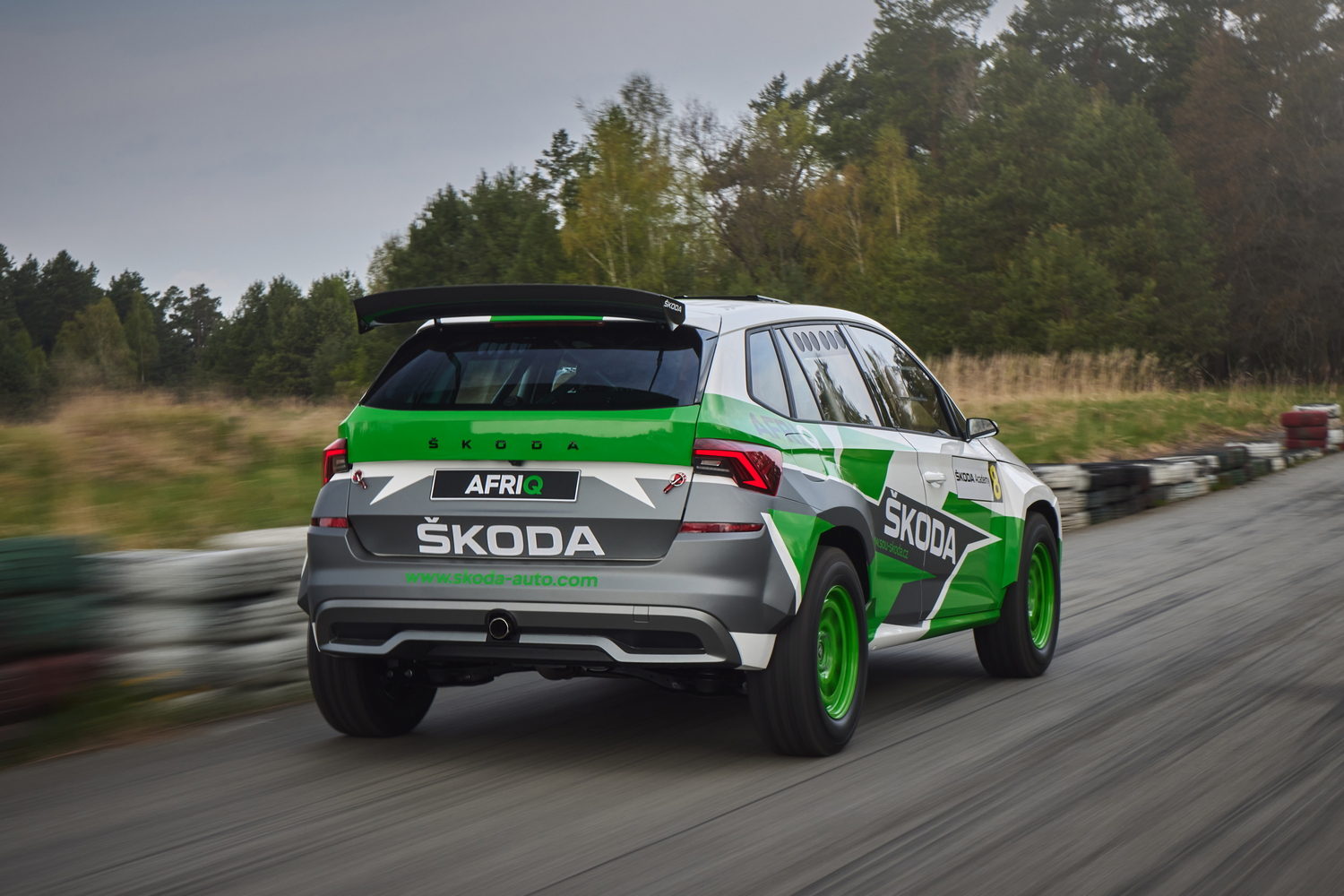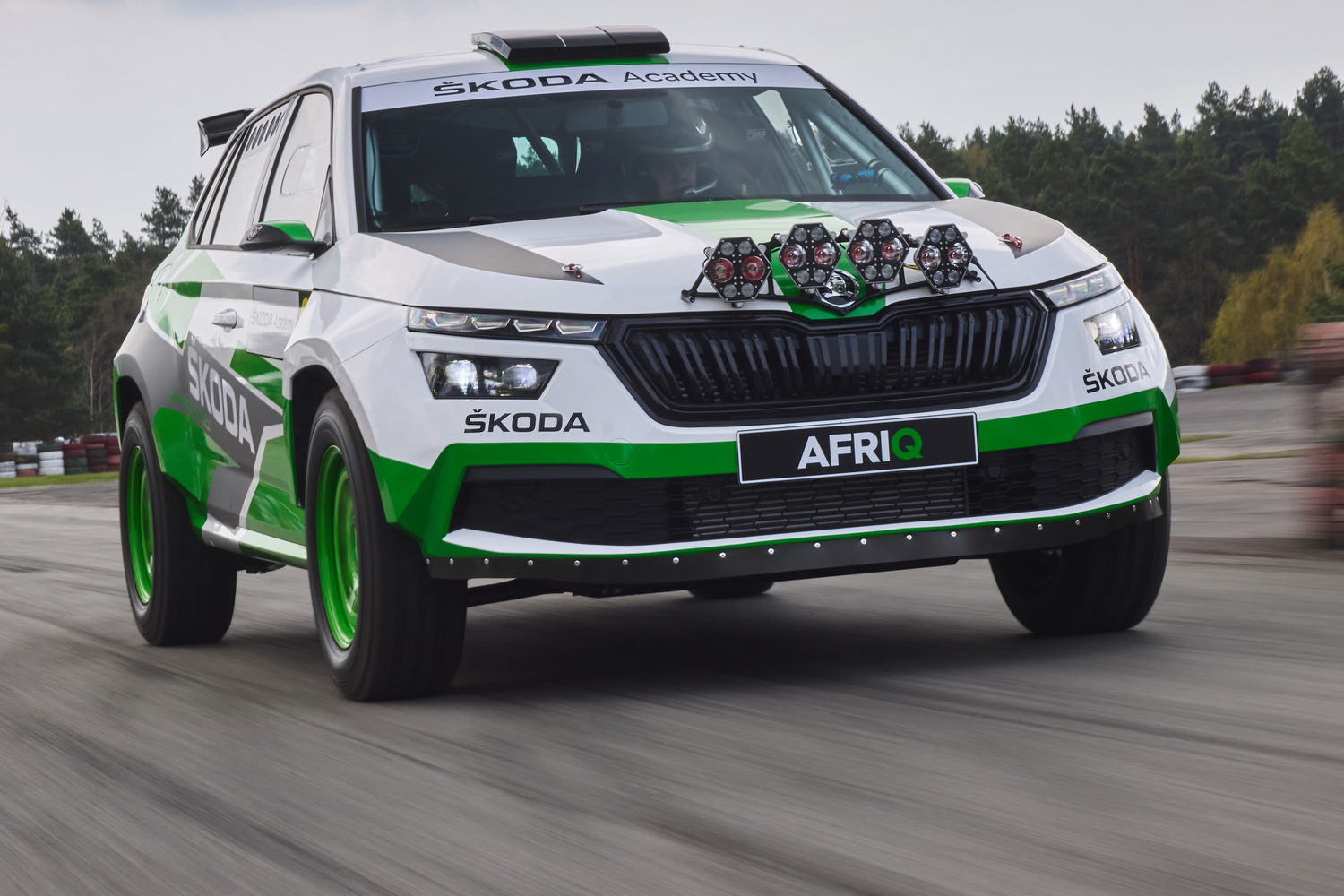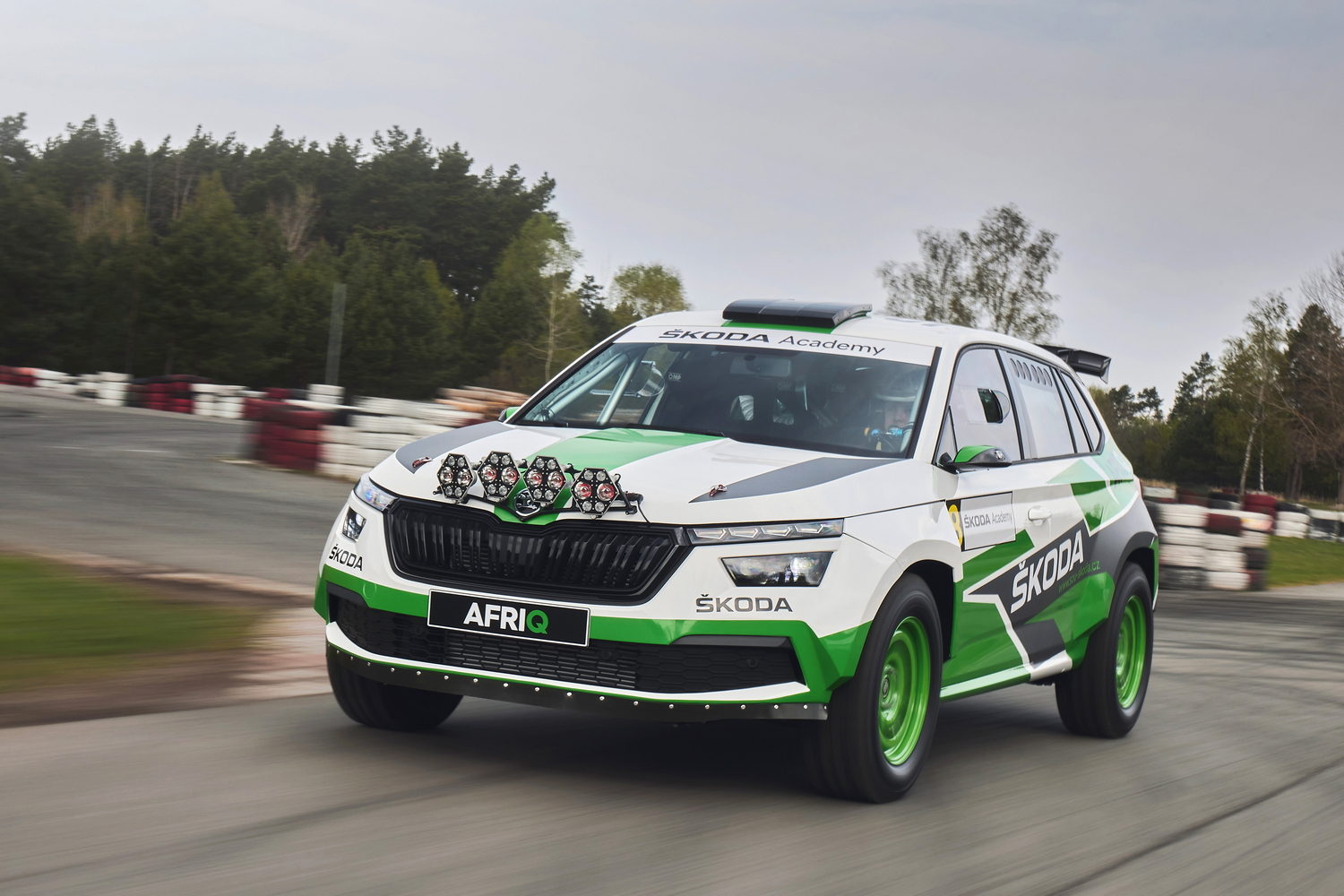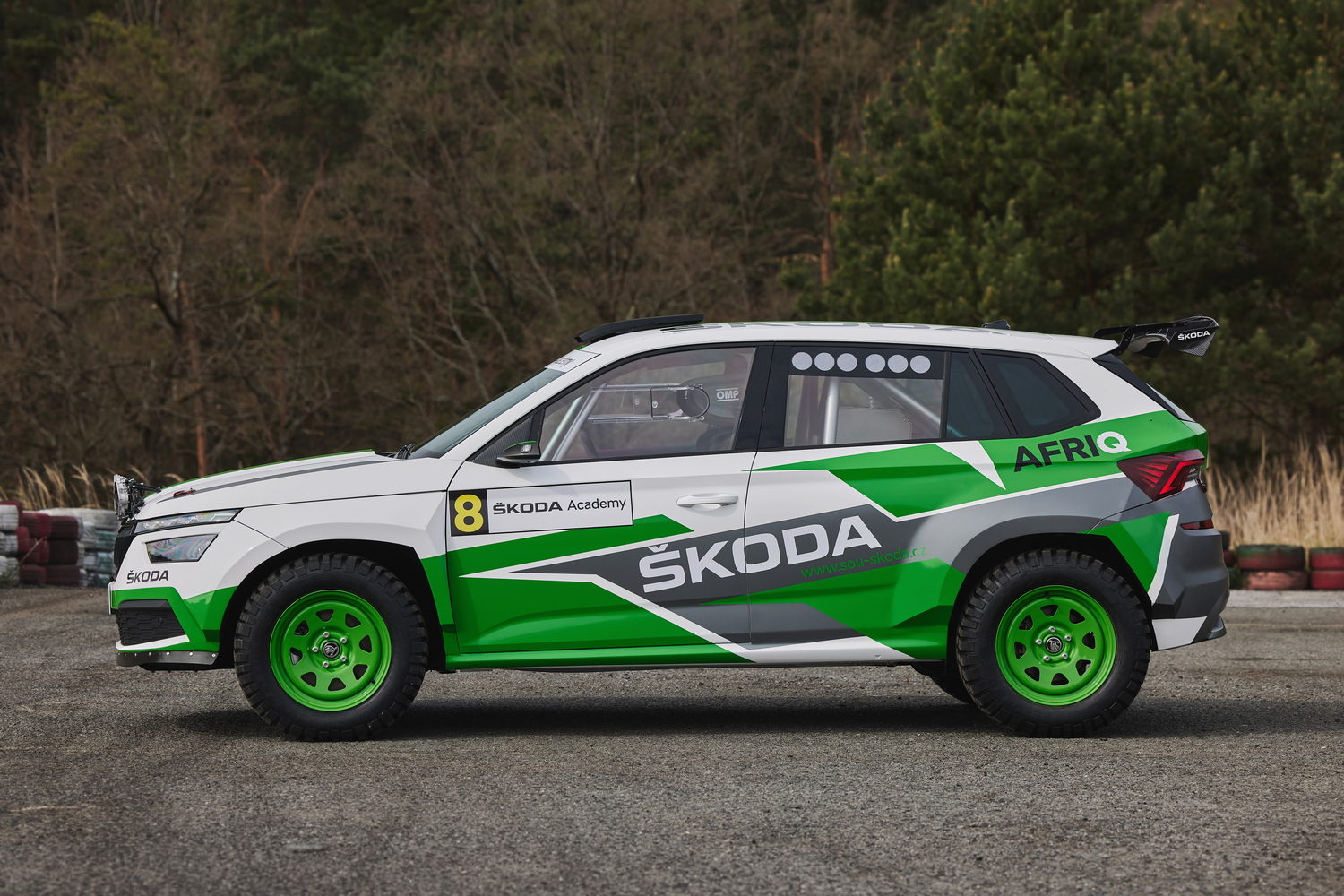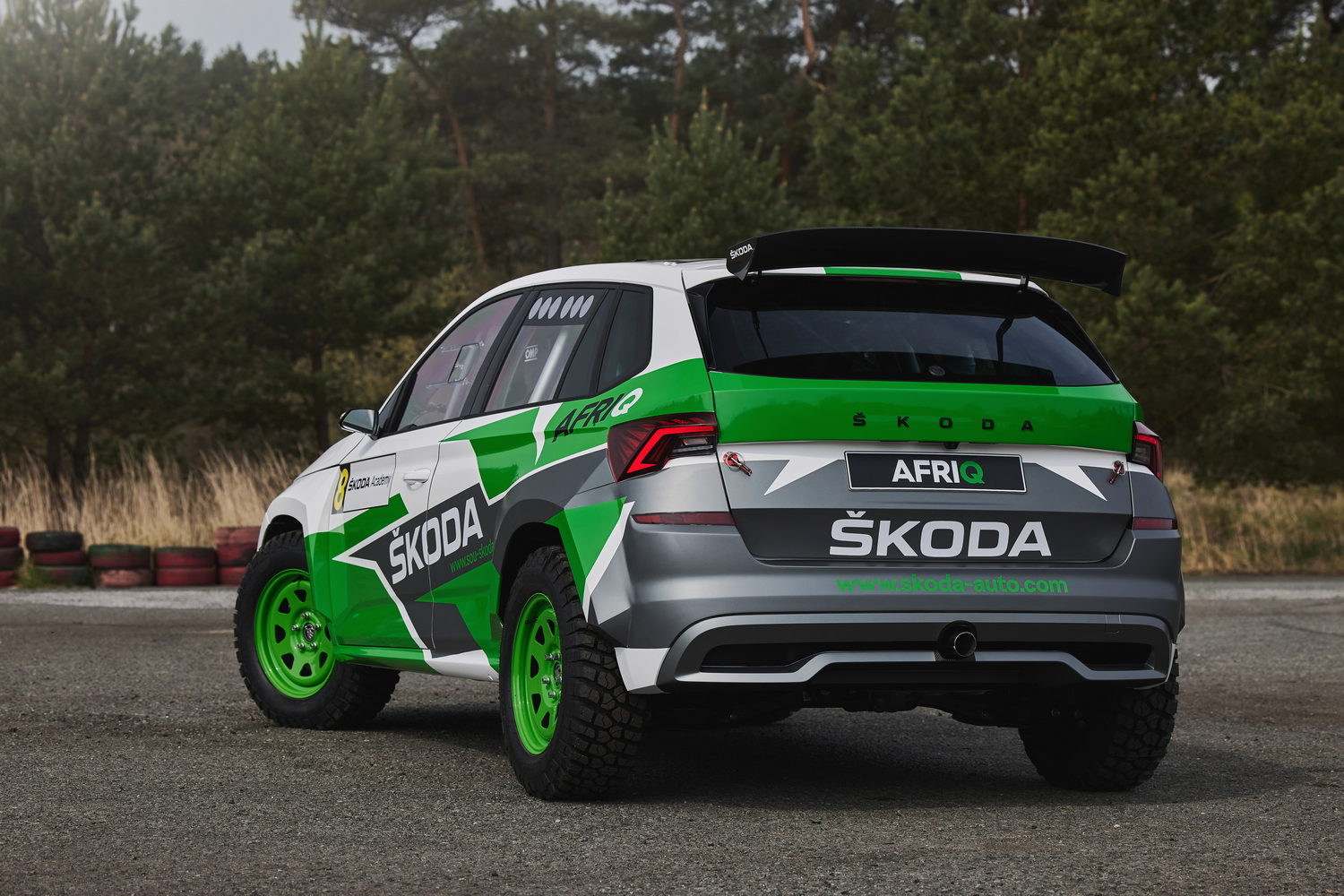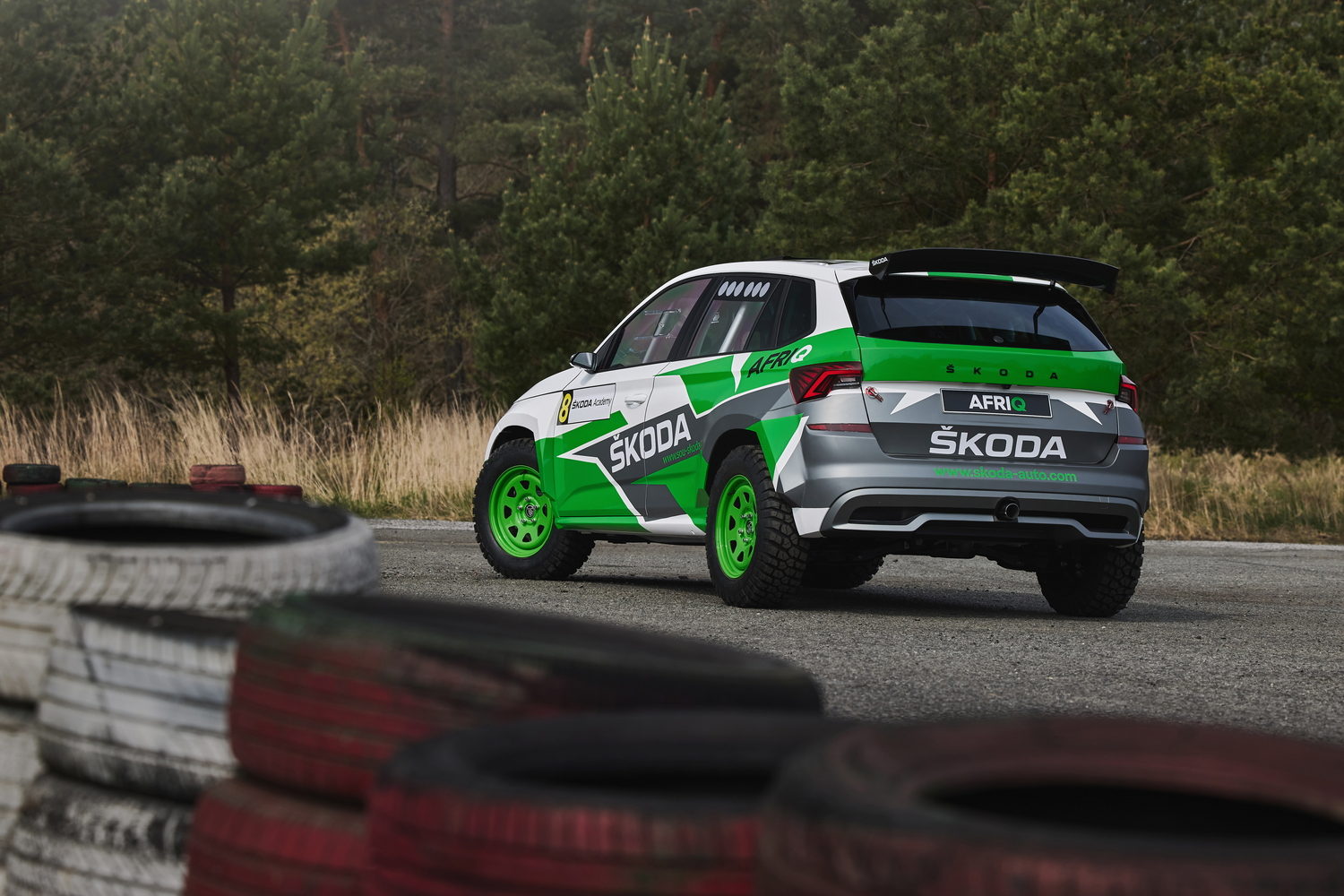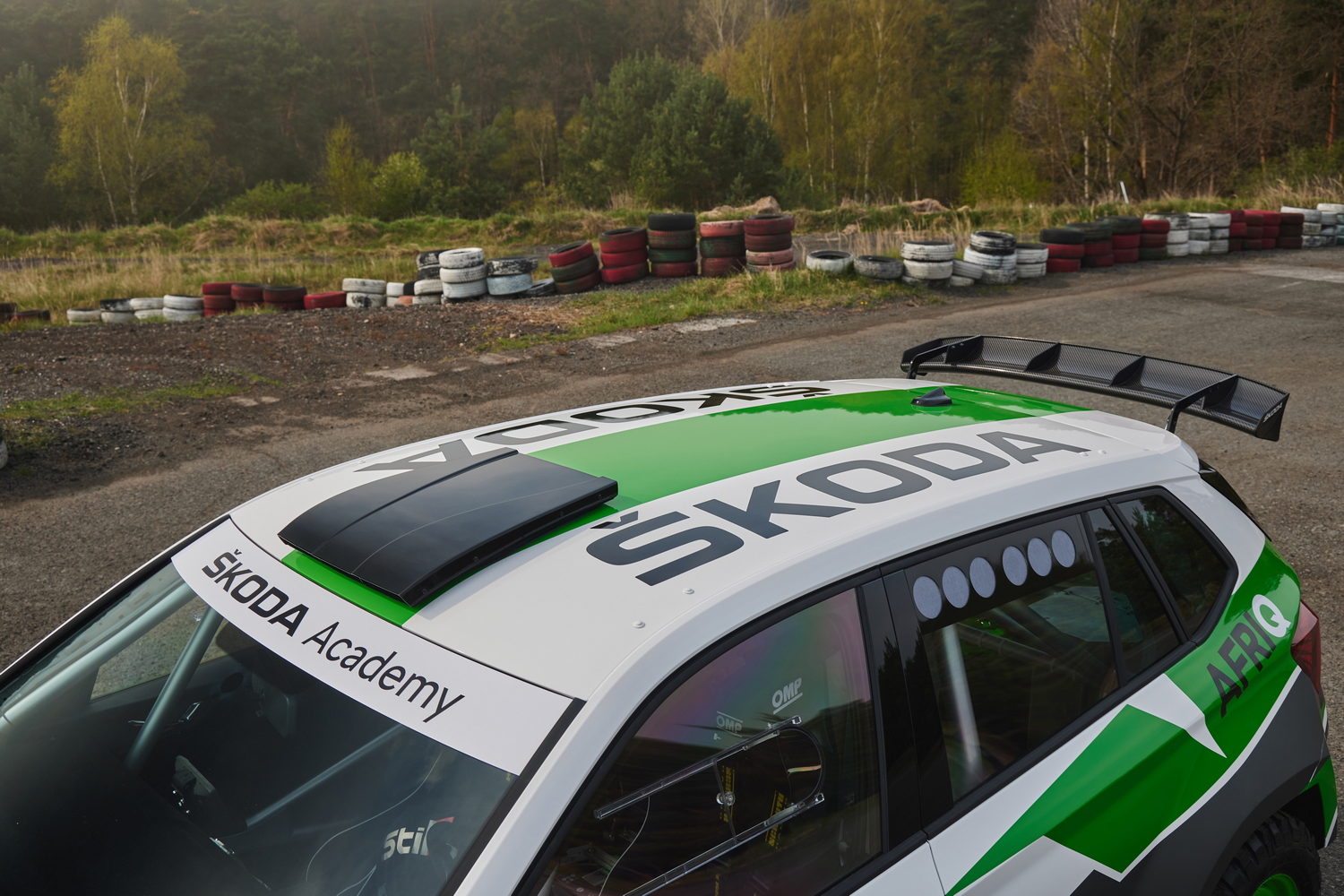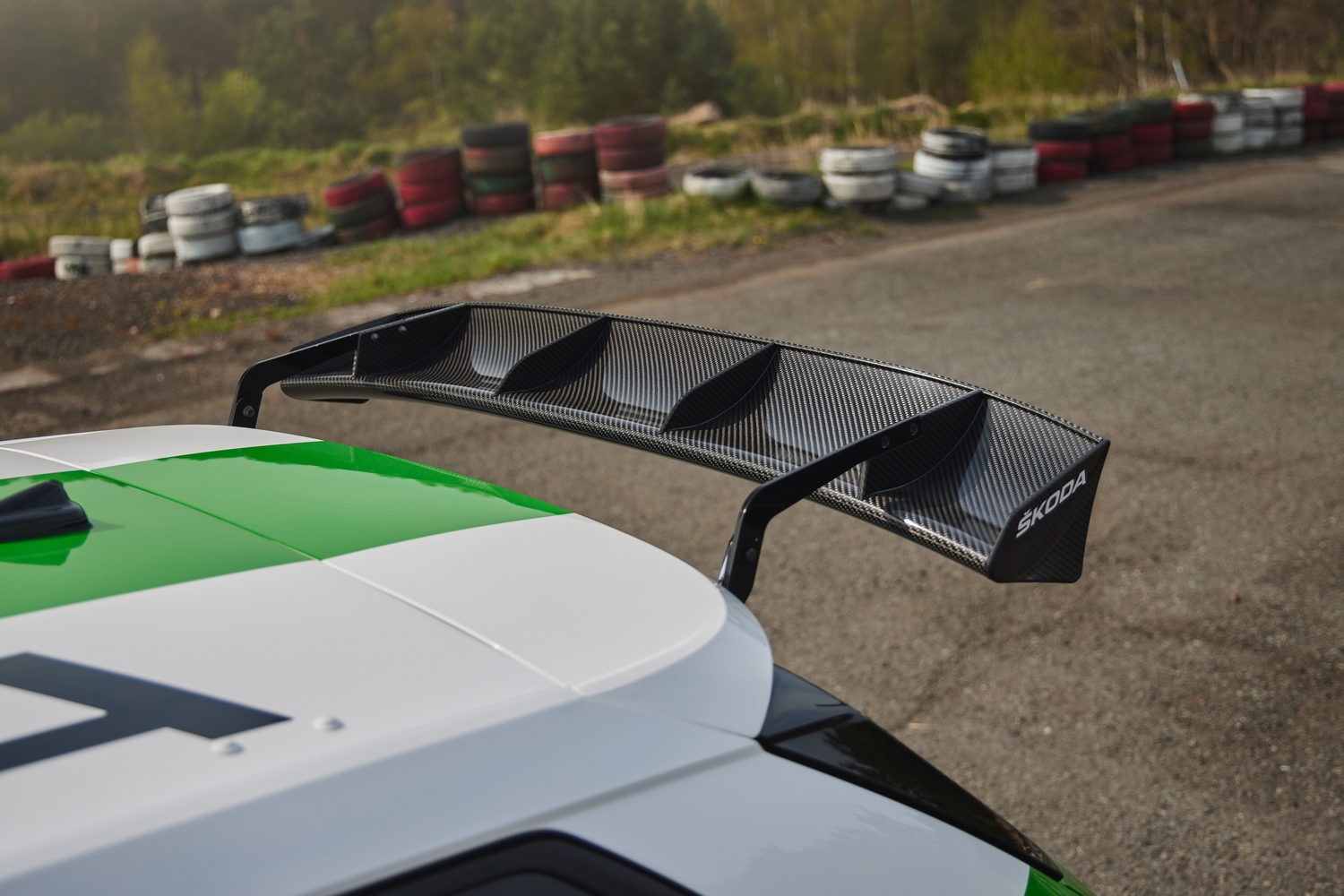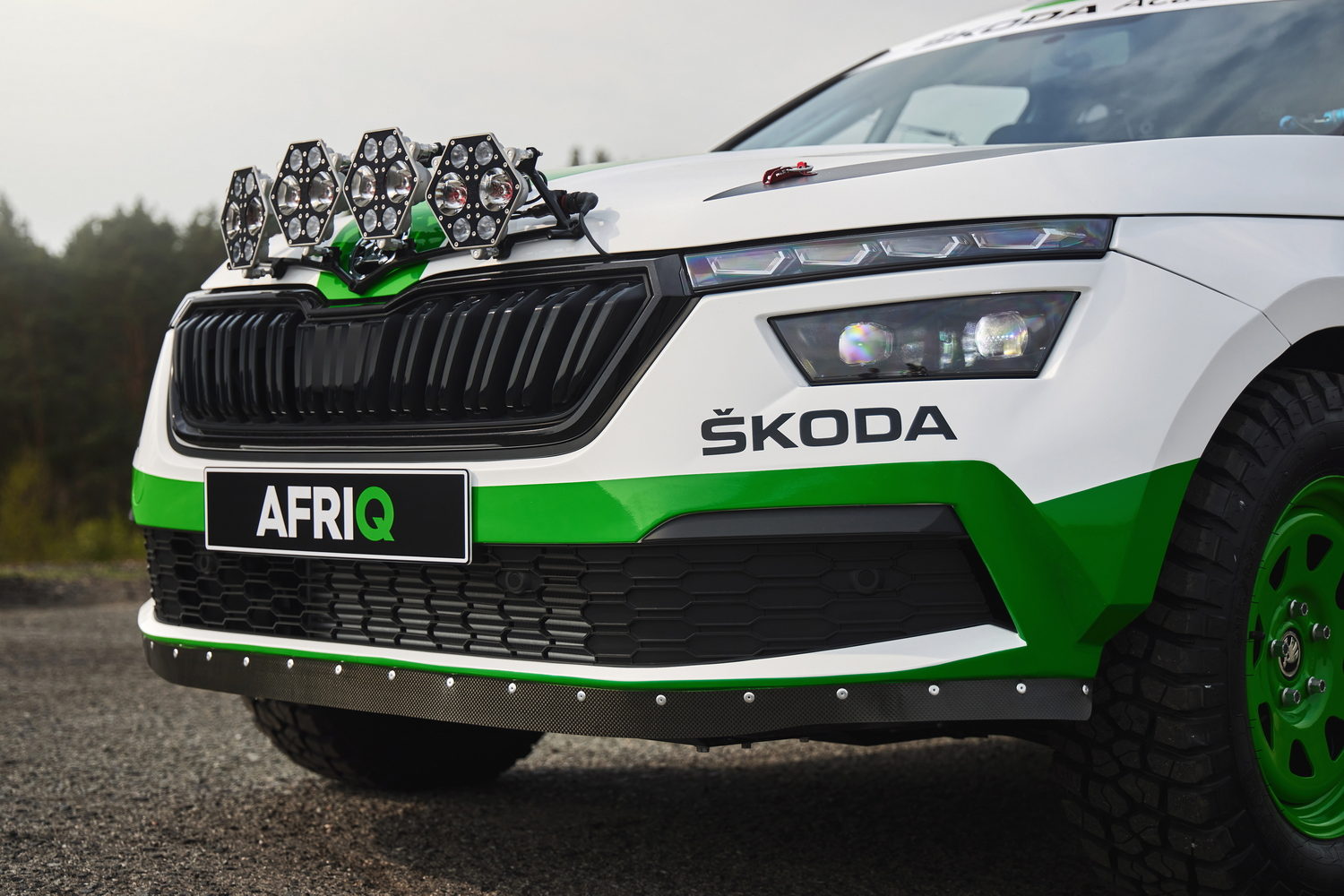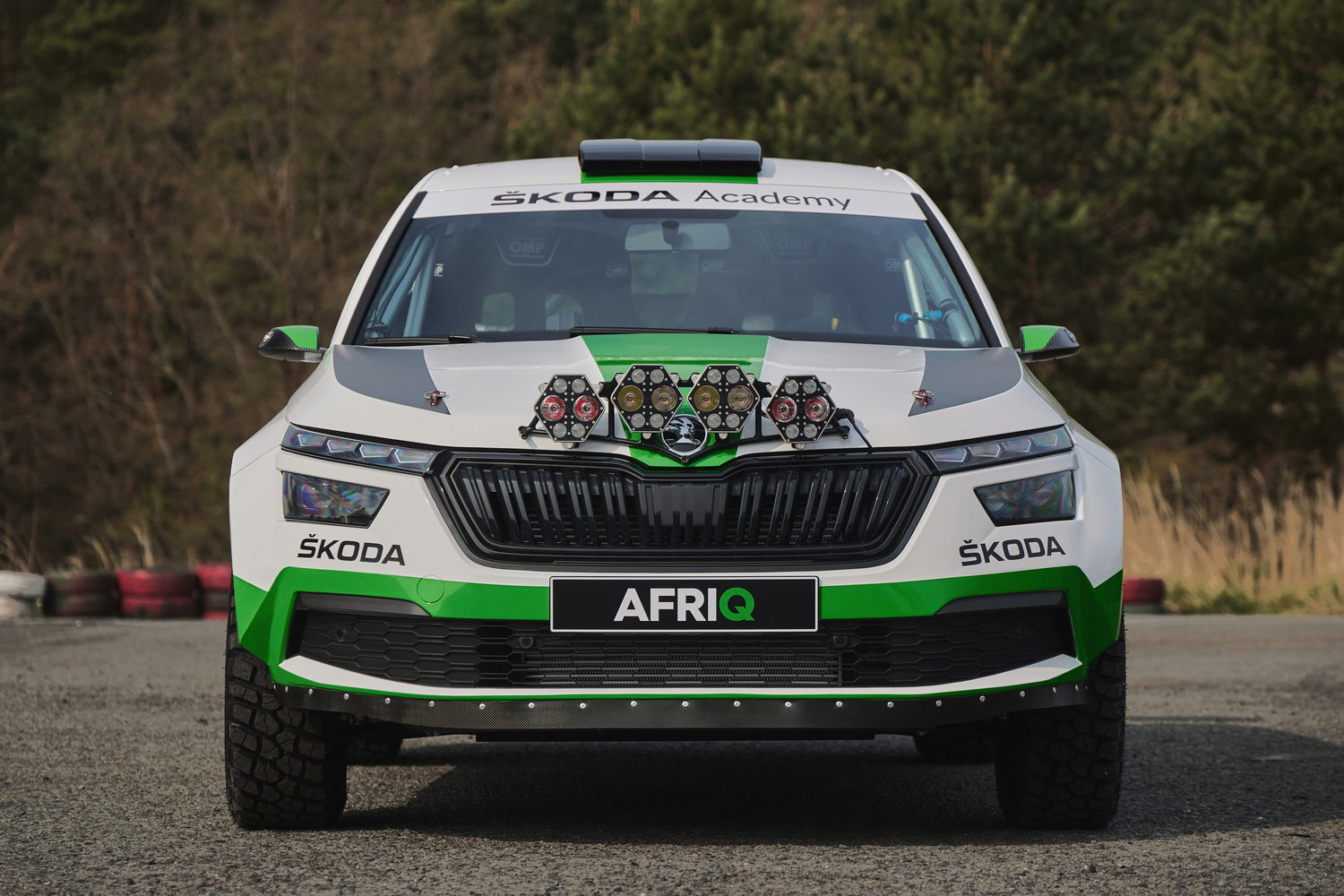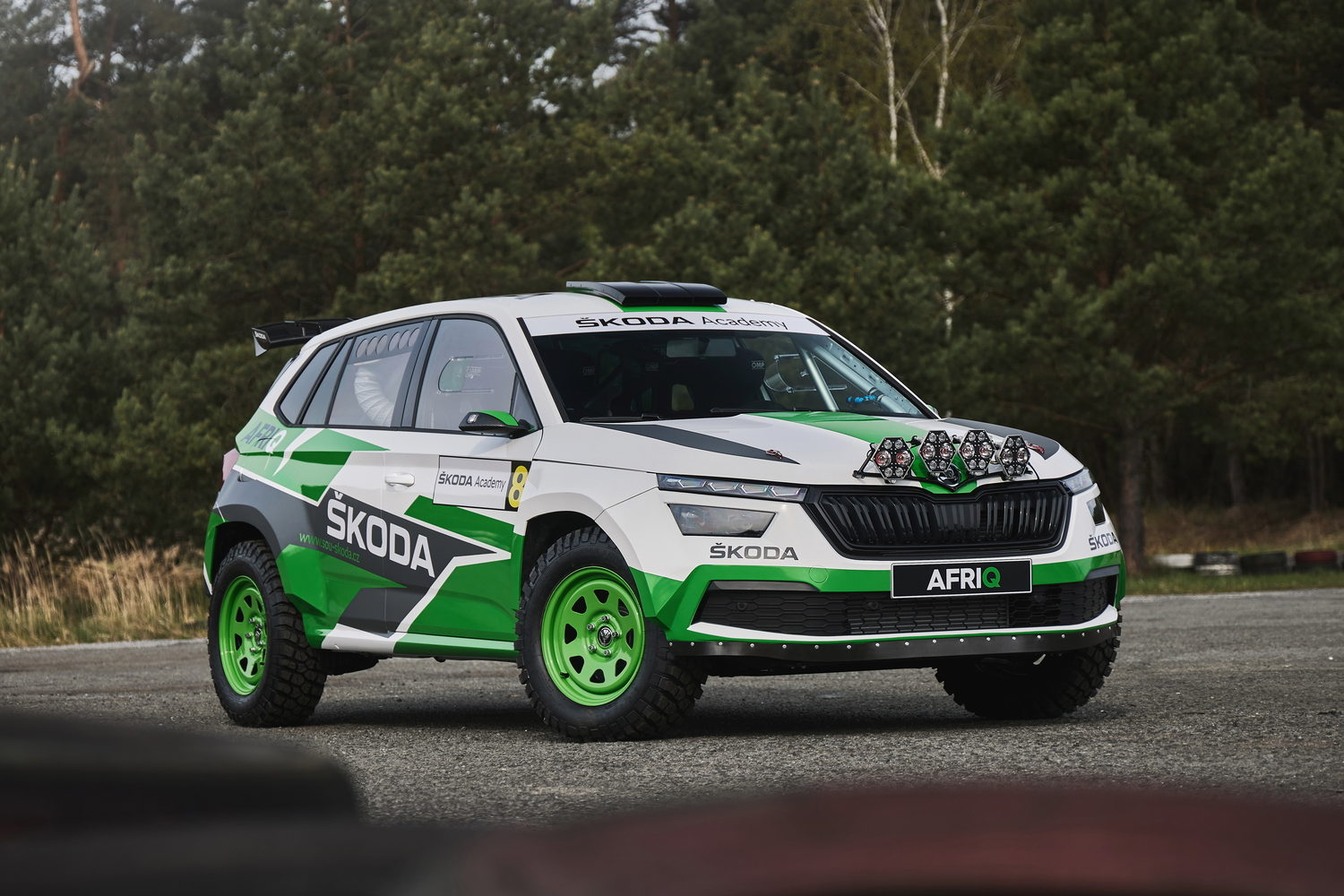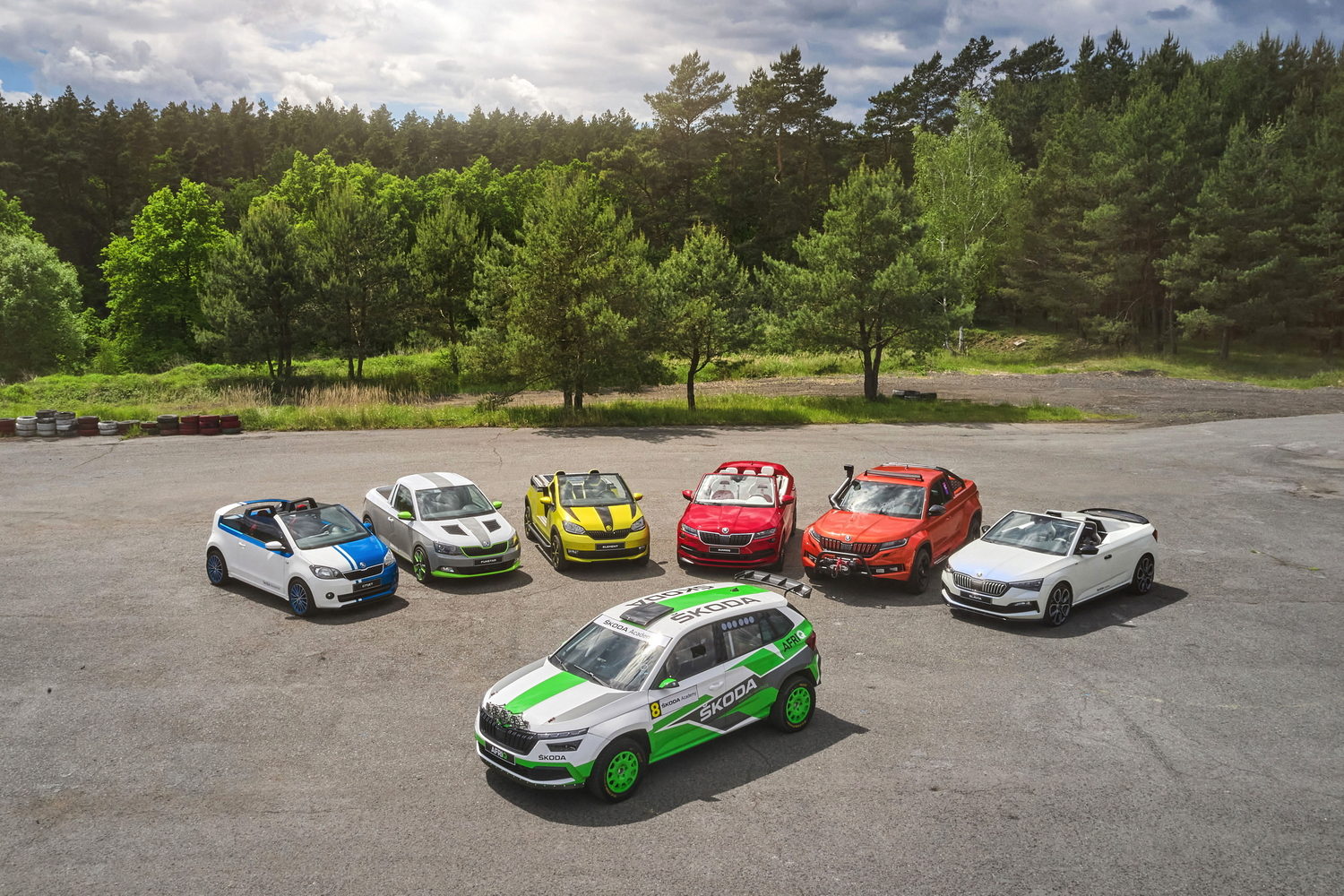The Skoda Afriq isn't a car that you're going to be able to buy any time soon. It's more special than that; it's the company's latest 'Azubi' car. The Azubi car programme comes from the German word for trainee or apprentice, and since 2014 it has become a regular part of the Skoda Academy and the Skoda Auto Secondary Vocational School of Engineering.
Each year a team of students combine their creative skills and talents to create a one-off vehicle that is based on an existing Skoda production model. A challenging pandemic period saw the latest class produce the Skoda Afriq, a rally car based on the Kamiq, showcasing some innovative technology along the way.
In the metal
With its full factory motorsport livery, the Skoda Afriq looks every bit the proper rally car, primed for taking on a stage of the Dakar. Its name not only serves as a nod to the famous desert rally but recognises that Skoda Auto now has responsibility for all of the Volkswagen Group operations in the North African region.
The Afriq began life as a regular Skoda Kamiq before the students set about stripping the car down to its shell and starting the transformation. Its 190hp 2.0-litre TSI petrol engine comes from an Octavia and is mated to an all-wheel-drive transmission with a seven-speed DSG automatic gearbox. The first challenge was squeezing the new powertrain into a car that was never designed to take it in the first place. Doing so called for alteration to the chassis mounting points and increasing the width of the front wings and wheel arches.
Fitment of rally-spec suspension increases the car's ground clearance to 190mm while the 15-inch wheels are wrapped with Insa Turbo 4x4 tyres for maximum grip in challenging terrain. The installation the Afriq with the Watergen system (more on that shortly) led to the decision by the team of students to weld the rear doors shut as they would no longer be required for access. This also adds to the car's structural rigidity.
Not only did the Skoda Motorsport division provide guidance on the installation of the internal roll cage, but the race engineers also donated many of the components that feature on the company's Fabia Rally2 evo car, including the ultra-bright LED fog lights on the bonnet, roof-mounted ventilation flap and rear spoiler.
On the interior, it looks and feels exactly like a proper works rally car, with only a handful of production car details. Everything that isn't necessary to the car's operation is removed, while the OMP race seats from the Fabia Rally2 evo include six-point racing harnesses. The flock-covered dashboard also comes from the Fabia, as does the slim three-spoke steering wheel. A digital instrument display comes directly from the Kamiq while the centre console, if you can call it that, is a bespoke creation to accommodate the automatic drive selector and electronic parking brake. In front of the passenger seat is a carbon fibre footplate to provide additional support, and a rally-spec GPS system.
You might not expect to see a cupholder in a works rally car, but the Afriq has one. The Watergen system mentioned above is the work of an Israeli company that has engineered a method to produce drinking water from the ambient air. The system in the rear draws in air and condenses it into a filtration system that treats it with UV light to kill any potential microbes before storing it in a reservoir. In optimal conditions, the in-car system can produce 20 litres of drinking water per day, which it dispenses via a tap on the dashboard.
Driving it
In a typical rally car style, the seating position is much lower down than in a conventional car. That means once you're strapped into the snug racing seat with the six-point harness, your eyeline is only just over the dashboard, making it a little tricker to see corners and, without a co-driver next to us calling the notes, we opted to take things at a leisurely pace. The view out the side is also greatly restricted due to the shape of the head supports in the seat, but if you're going quick enough on a stage, your eyes need only be pointing in one direction, right?
The ride is surprisingly smooth and supple on the tarmac sections, while the multilink rear suspension helps keep the back end planted in the corners. Those chunky tyres also do an excellent job of soaking up the bumps though sitting in a stripped-out shell you can hear all of the gravel and detritus being flicked up in the wheel arches and under the floor of the car as you go. In truth, this only enhances the pukka rally car image.
The 190hp turbocharged engine provides ample performance for a car that now weighs only 1,350kg - around 200kg less than the standard production Kamiq. It sounds mean, too, as the students fabricated a bespoke exhaust system to fit the car, exiting through a single centre pipe at the rear. The dual-clutch automatic gearbox delivers each successive ratio at rapid-fire speed and without the need to take your hands off the steering wheel.
Summary
The Skoda Afriq is quite a special one-off car, more so as it was produced by students in their spare time. The attention to detail is particularly impressive, demonstrating a sense of vision and imagination and excellent fabrication and packaging skills. We commend Skoda for fostering the Azubi programme, and the students should be immensely proud of their creation.

